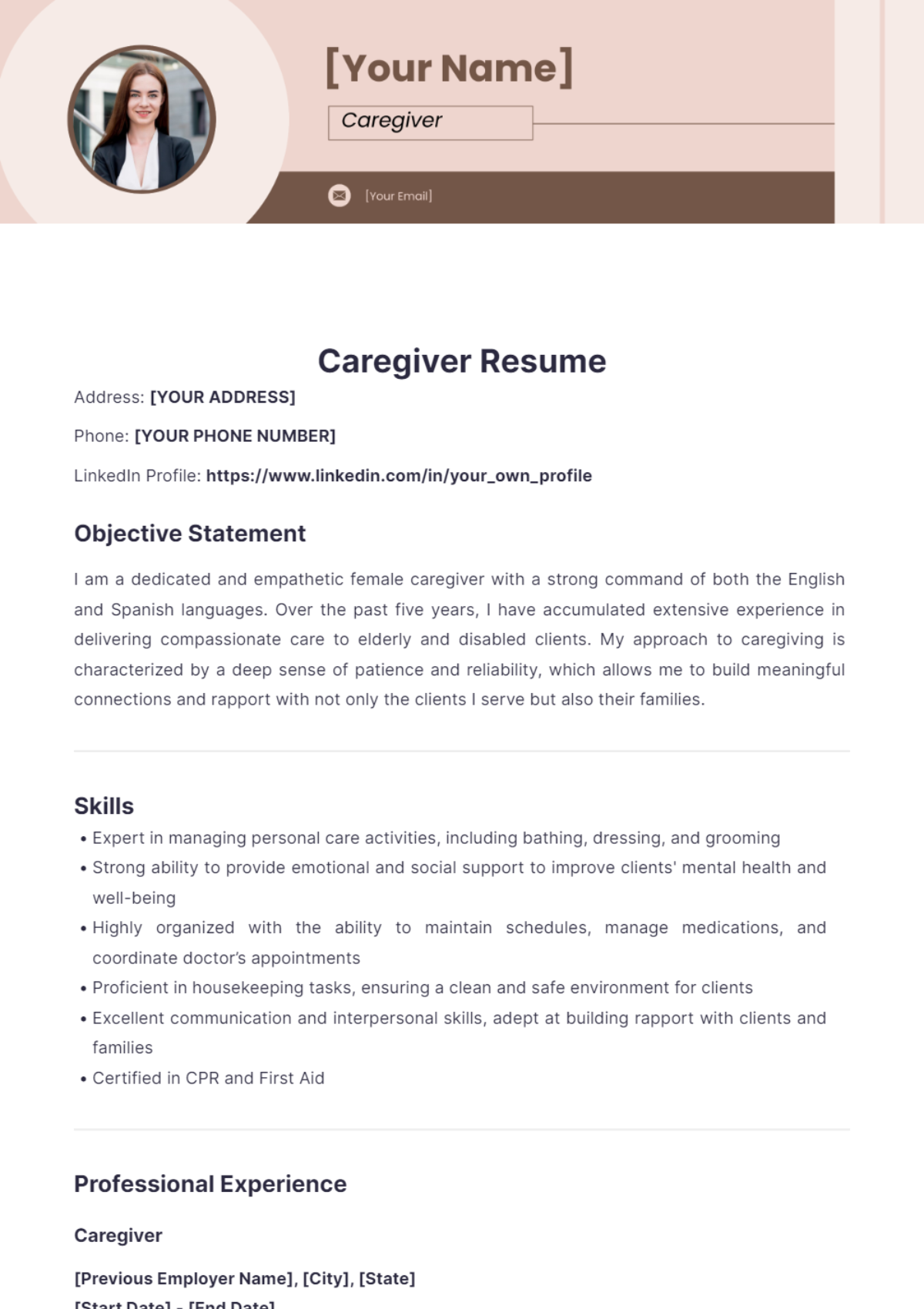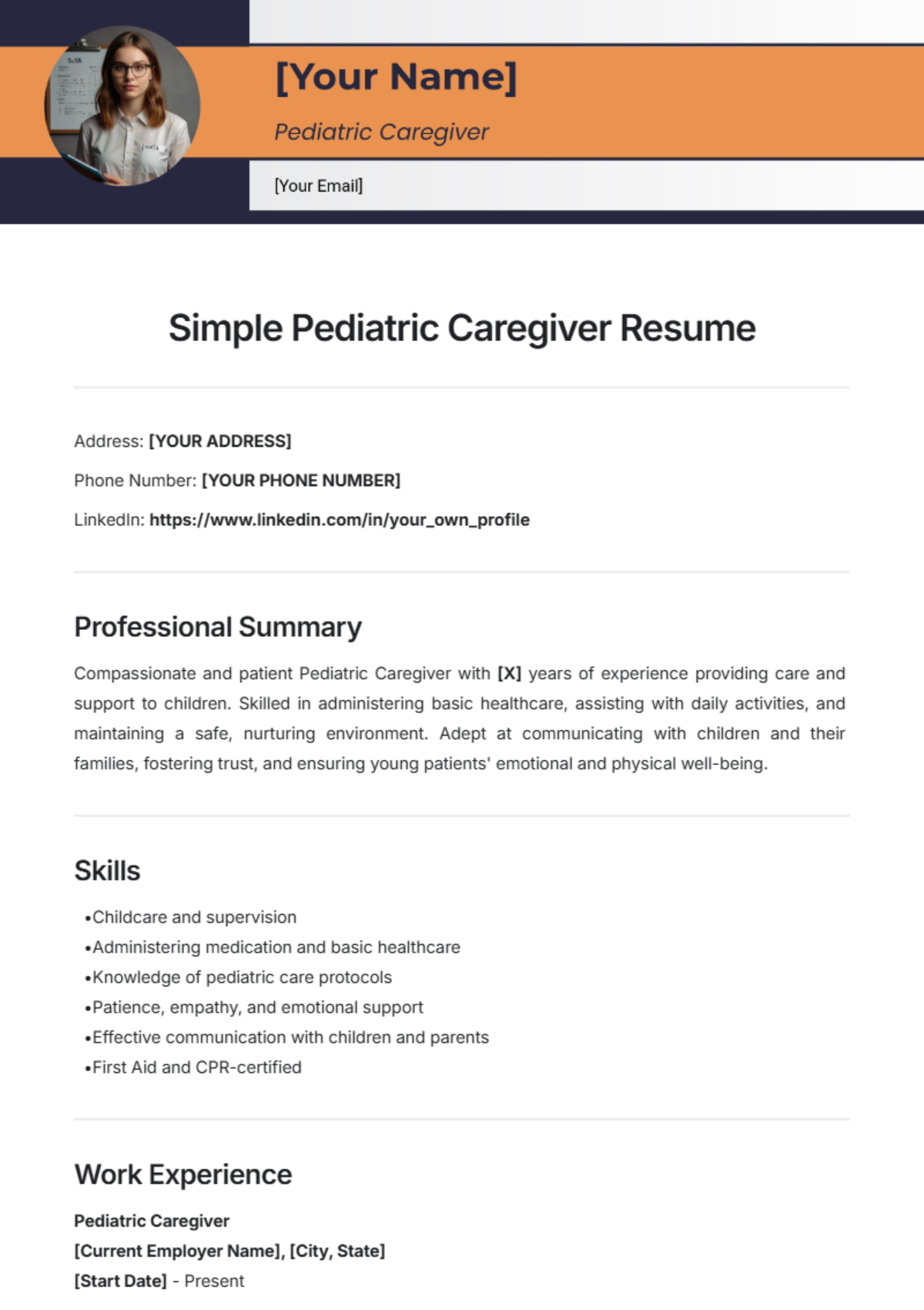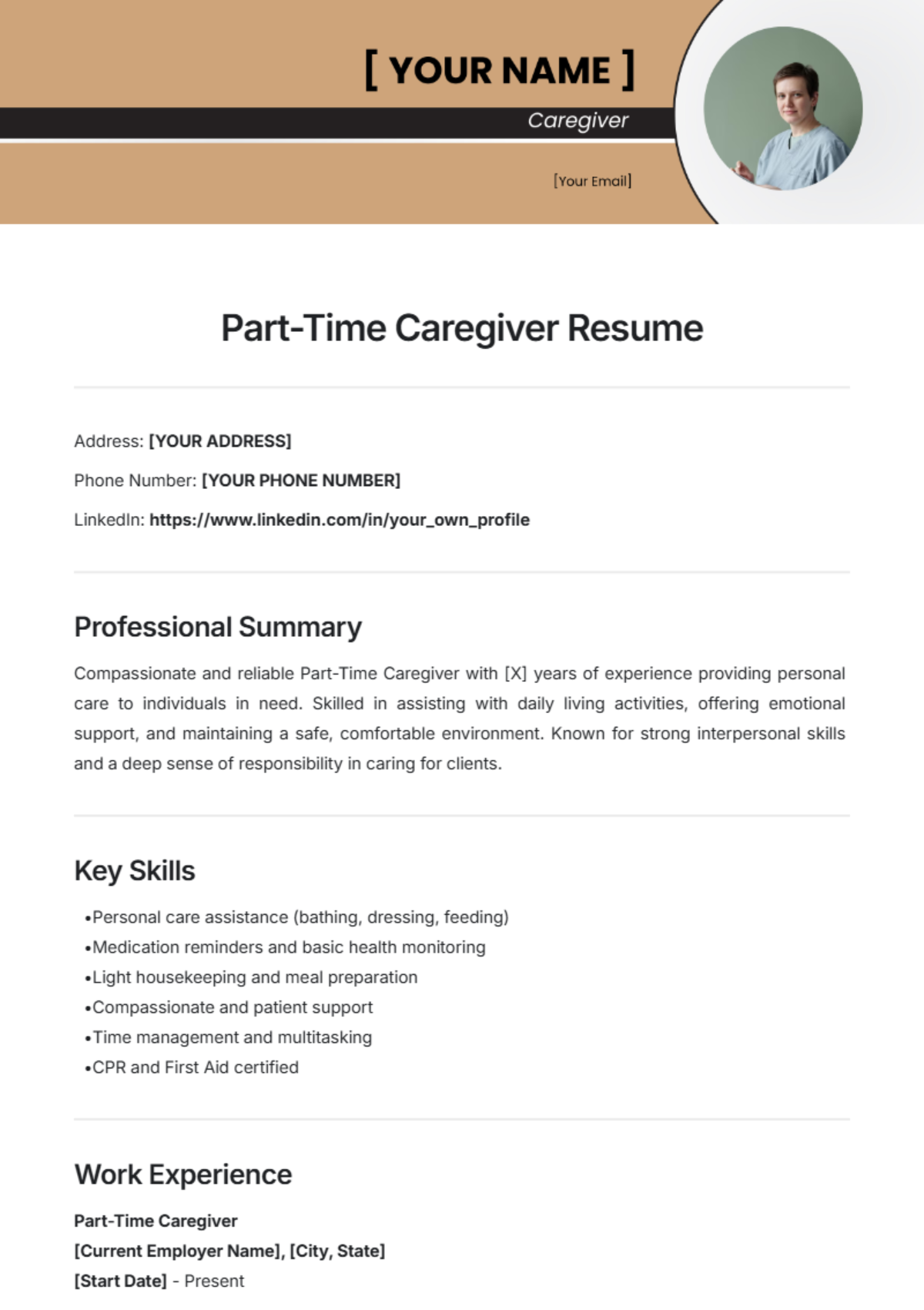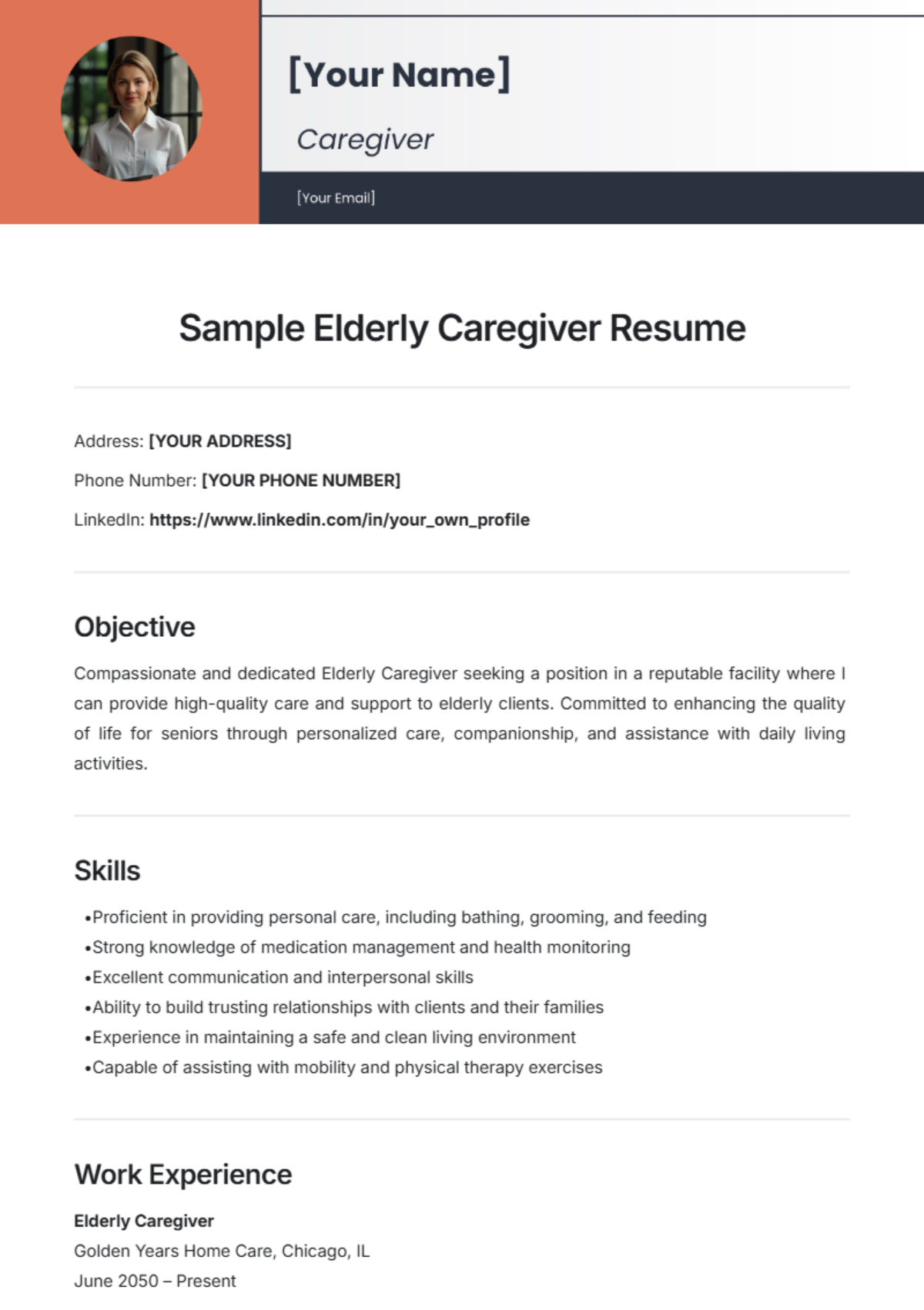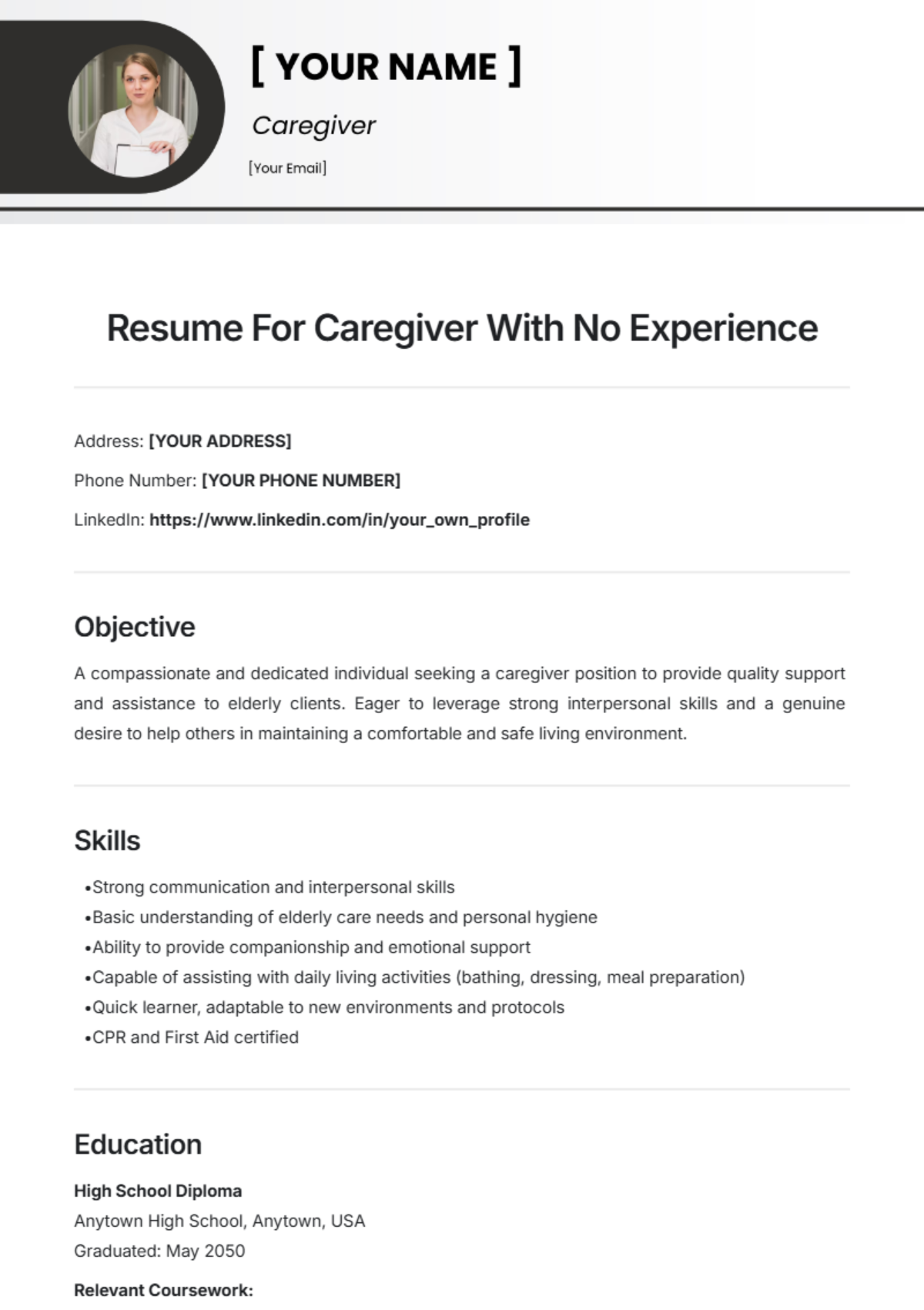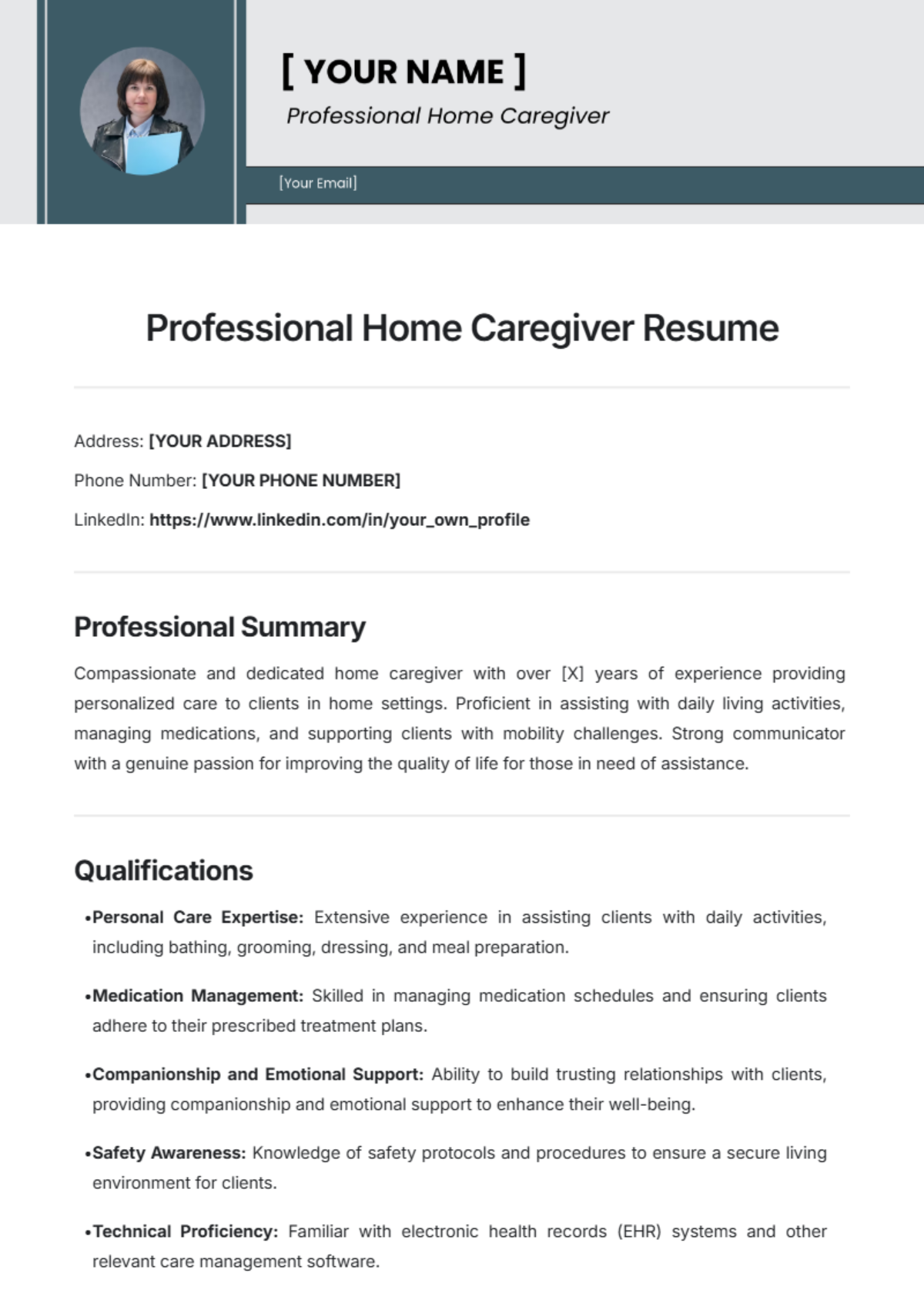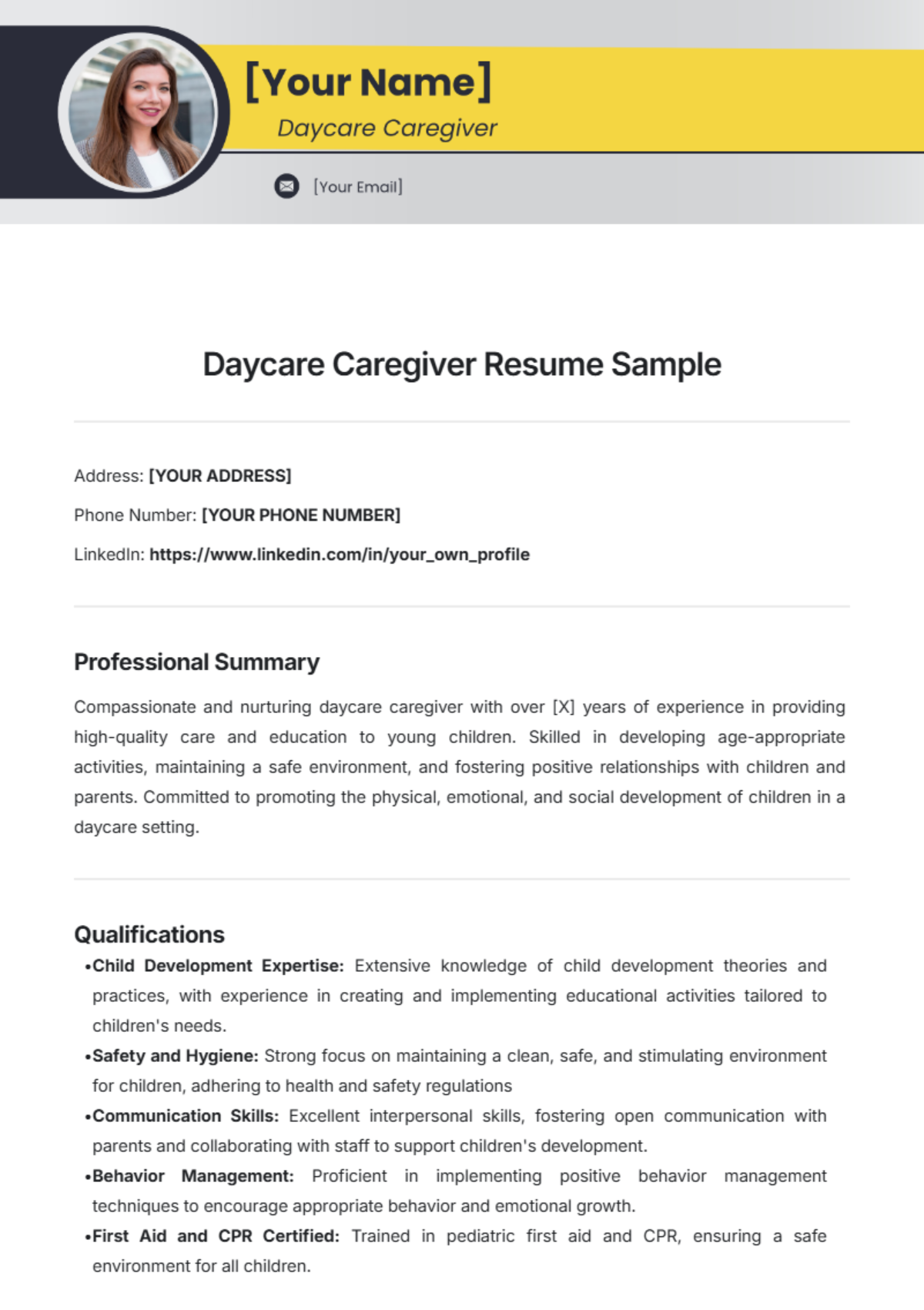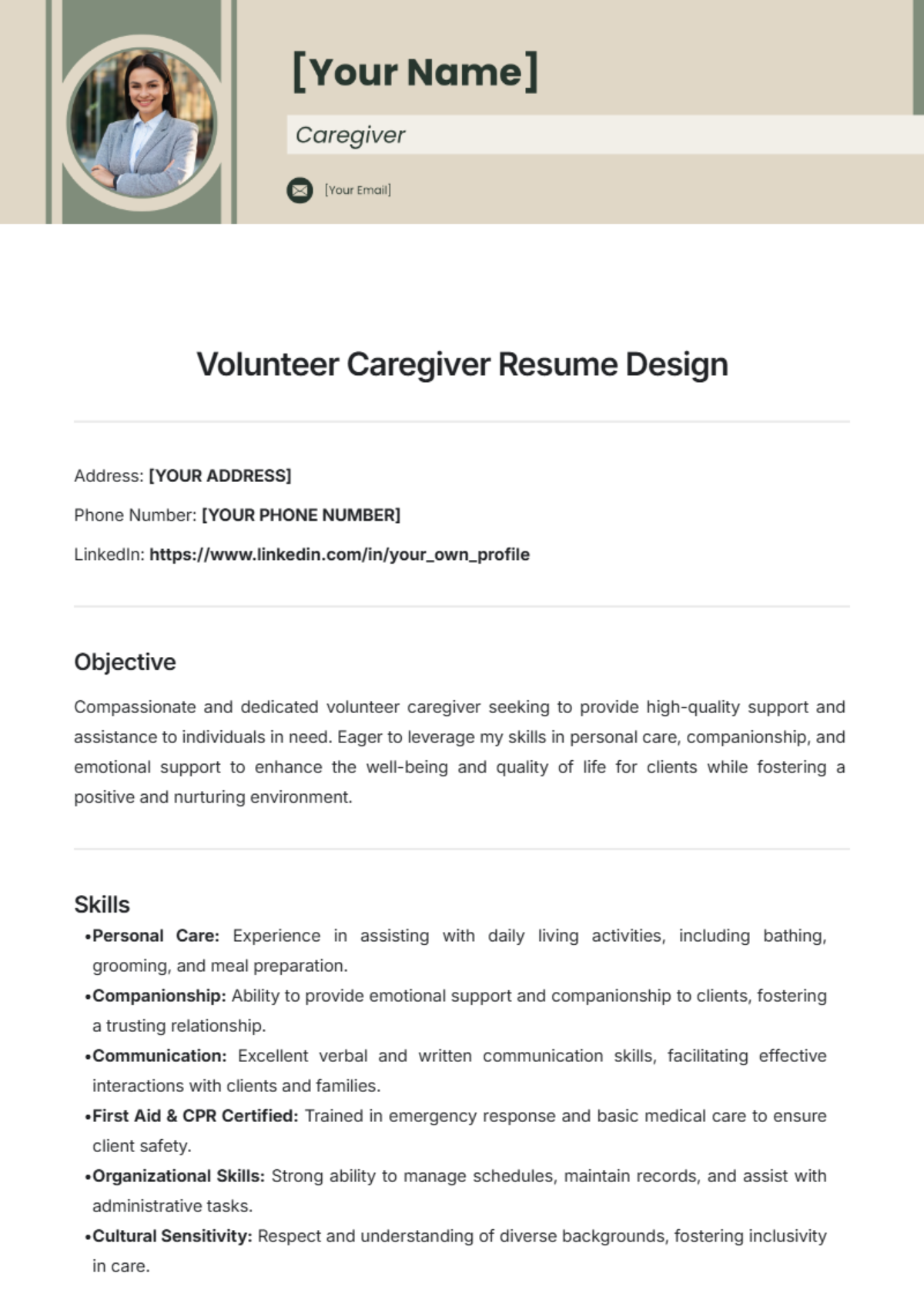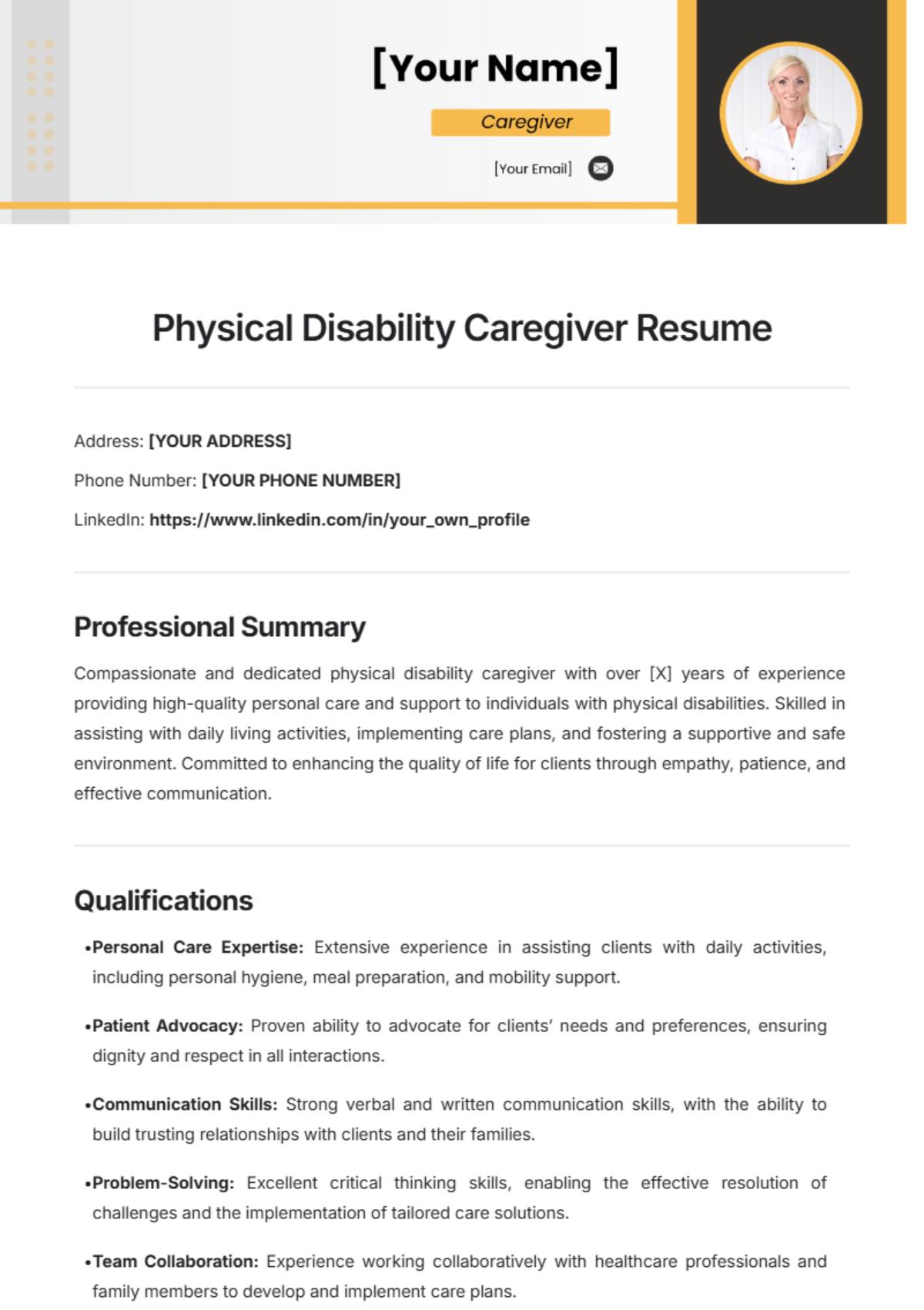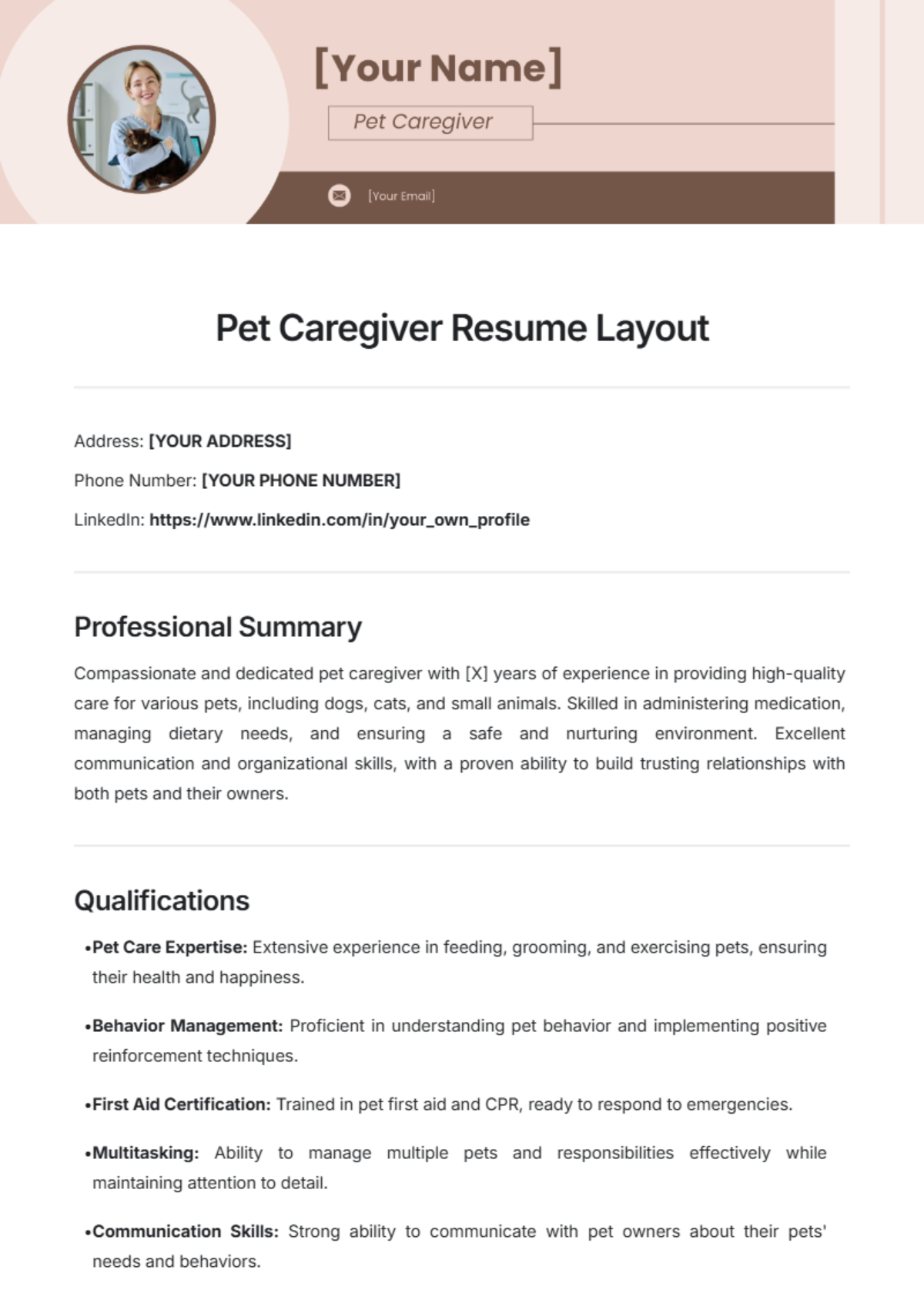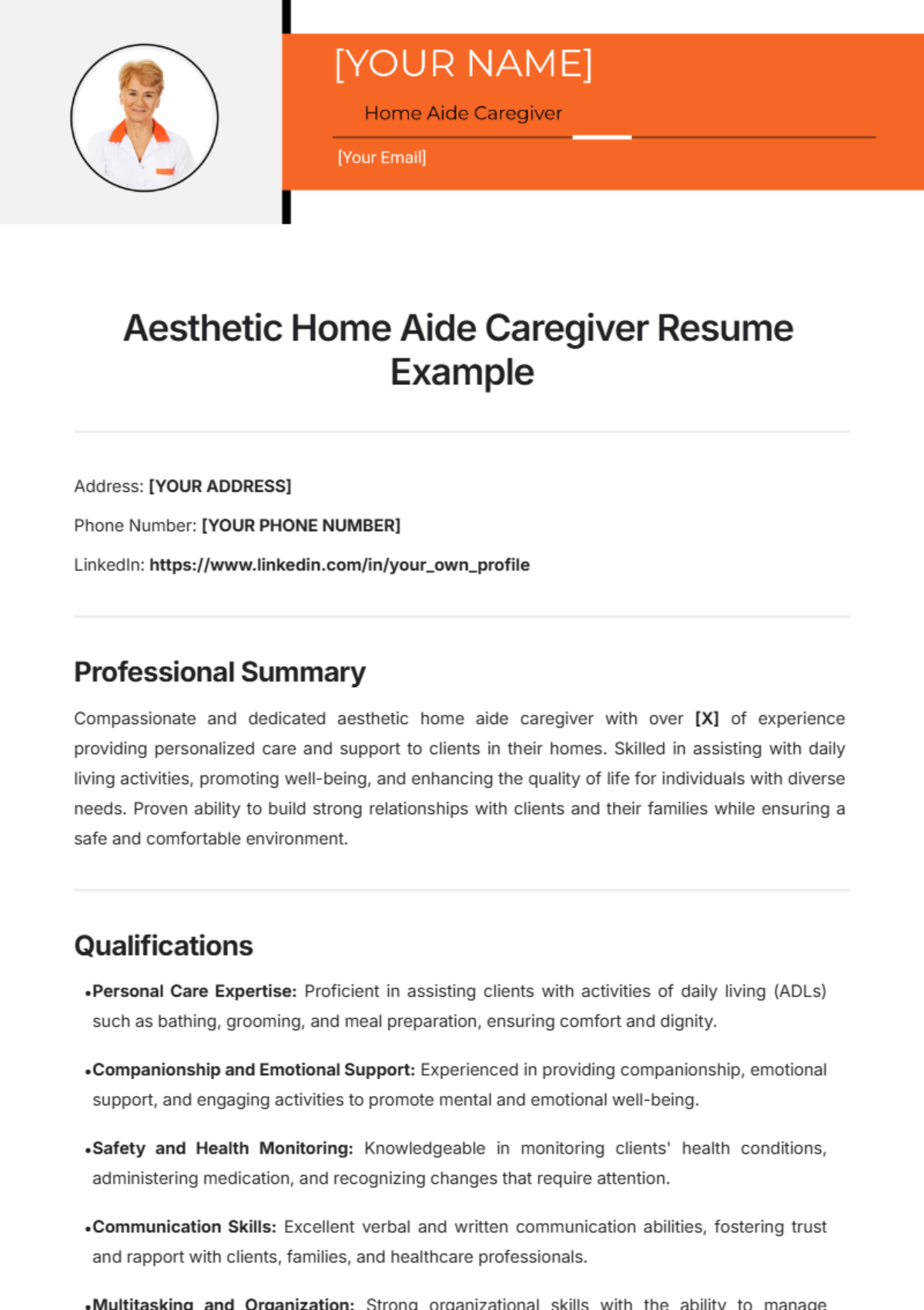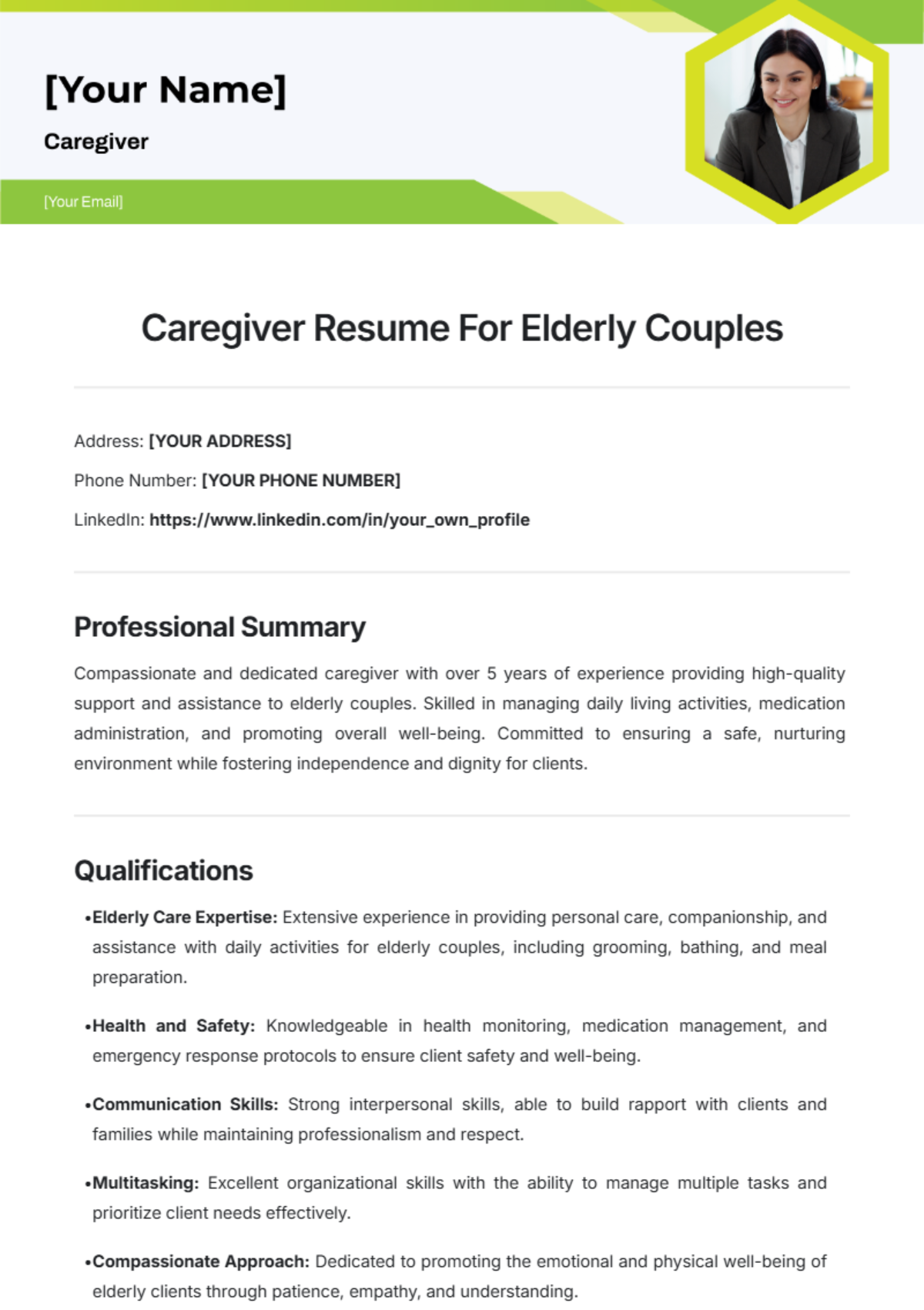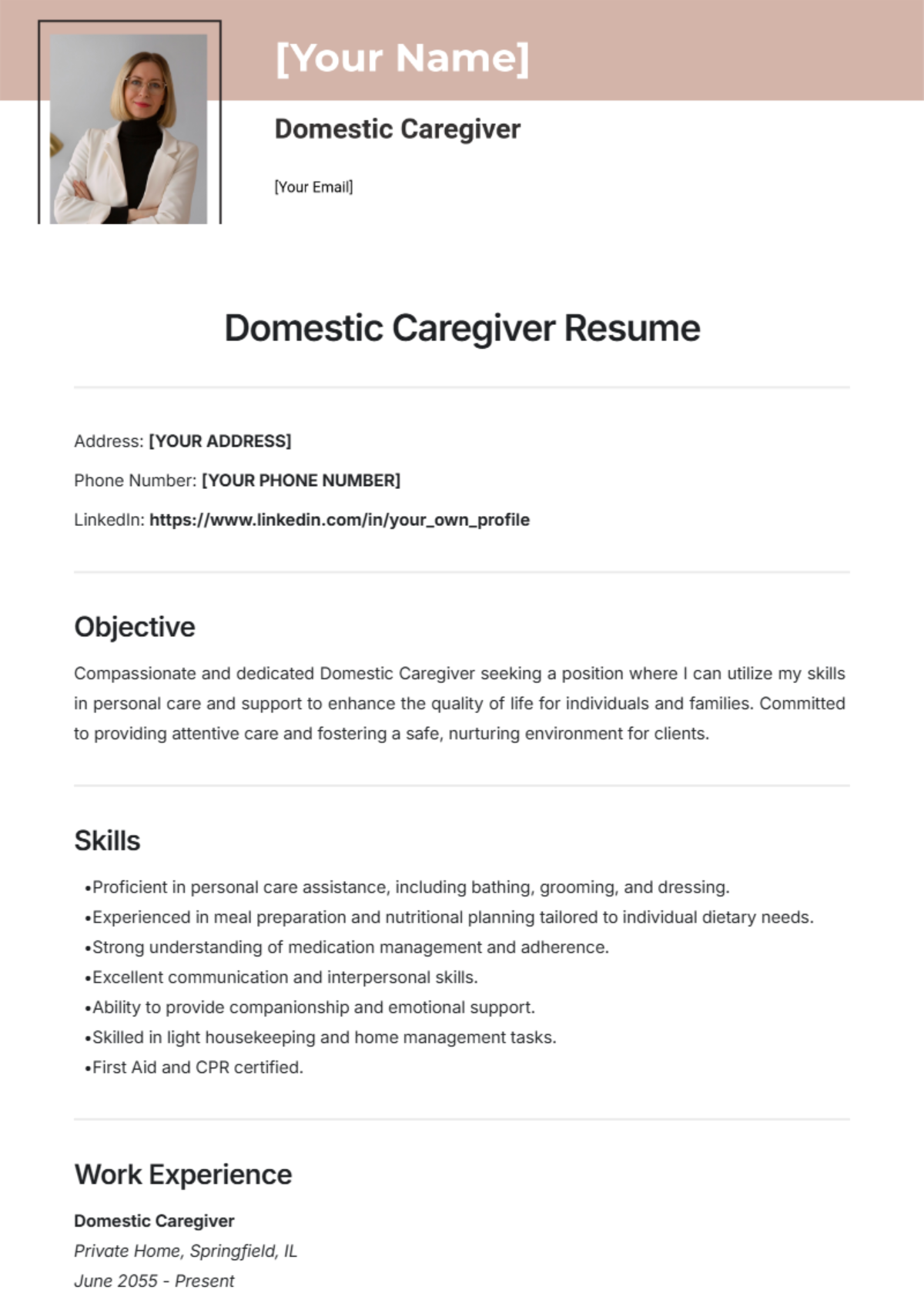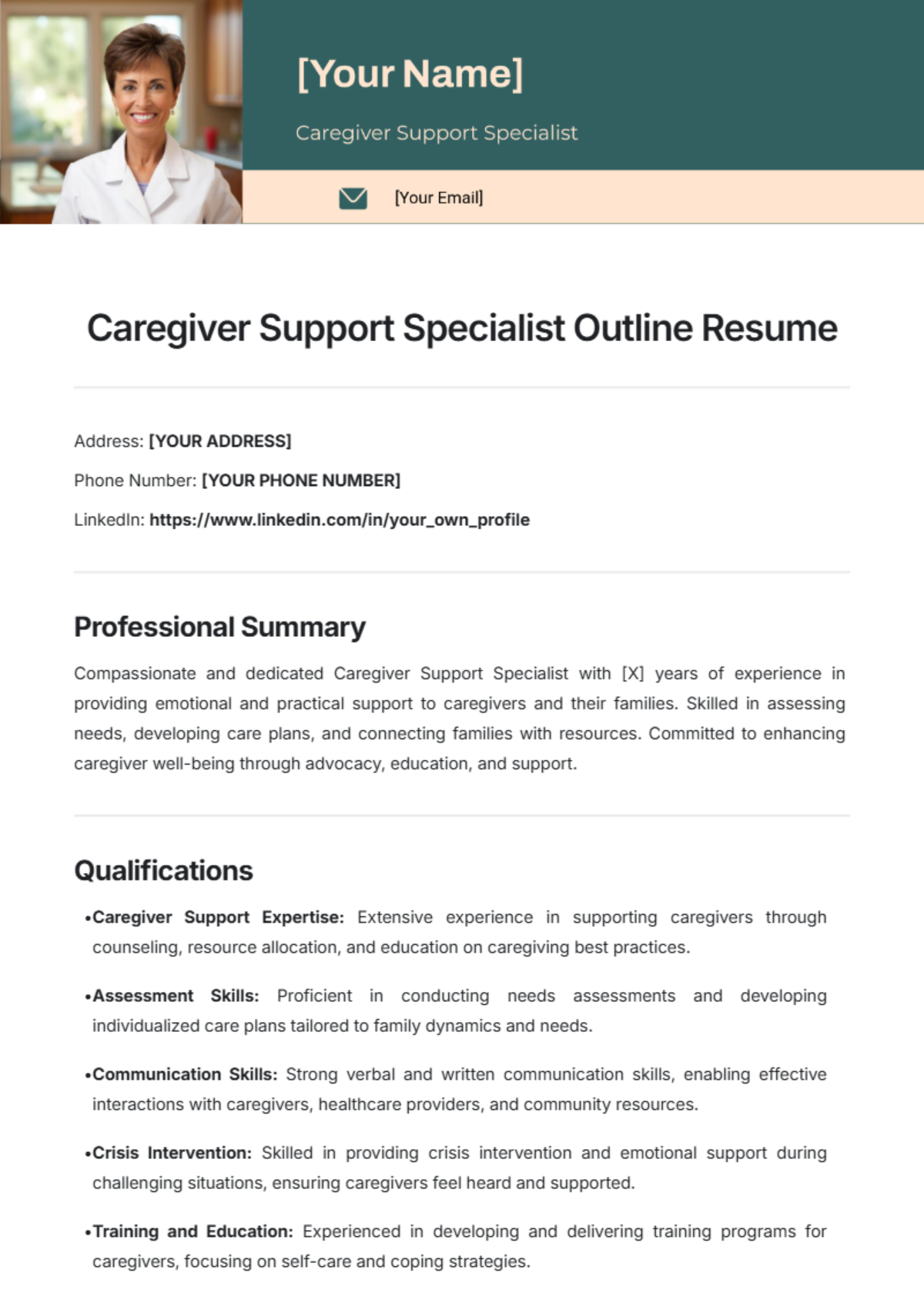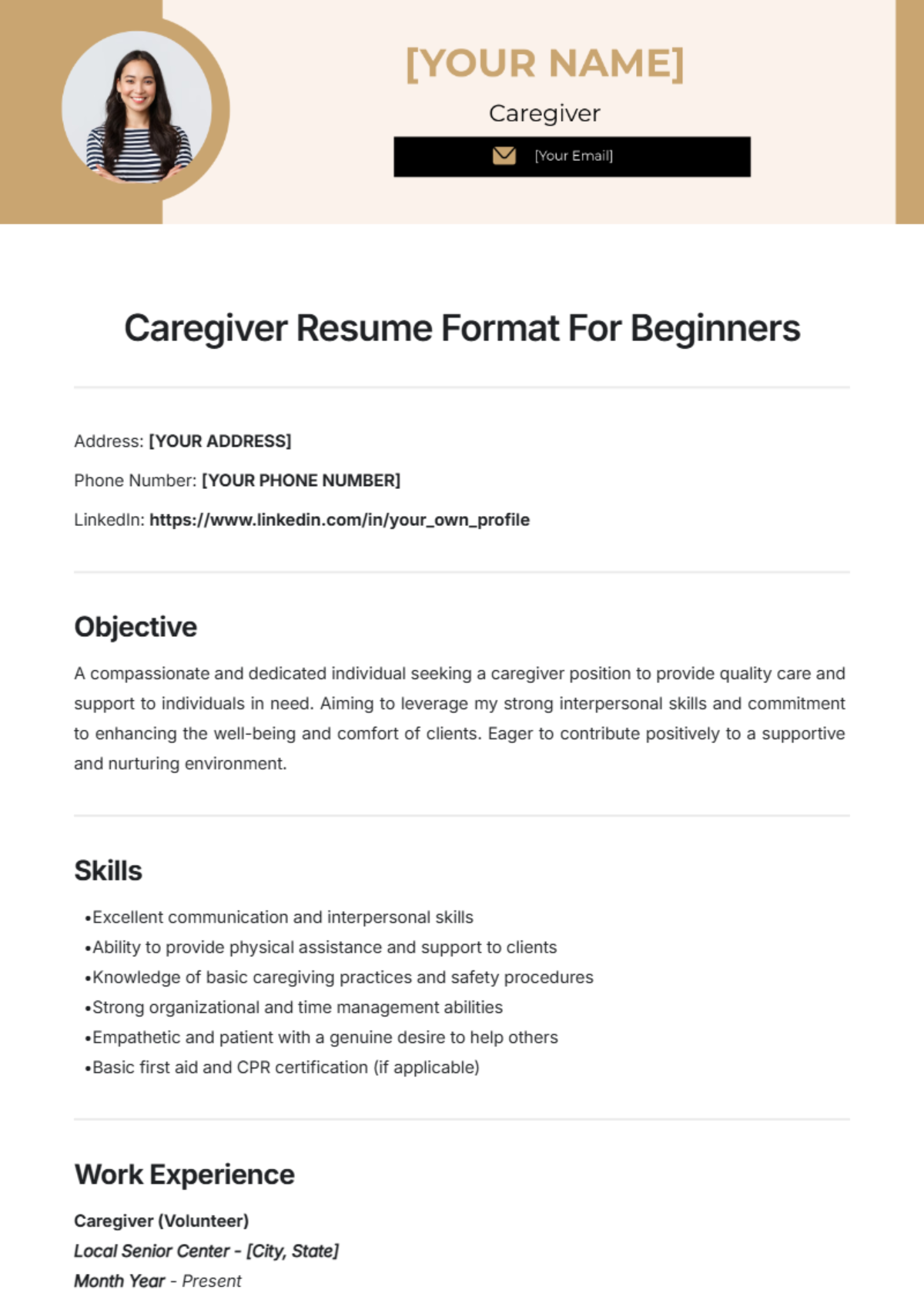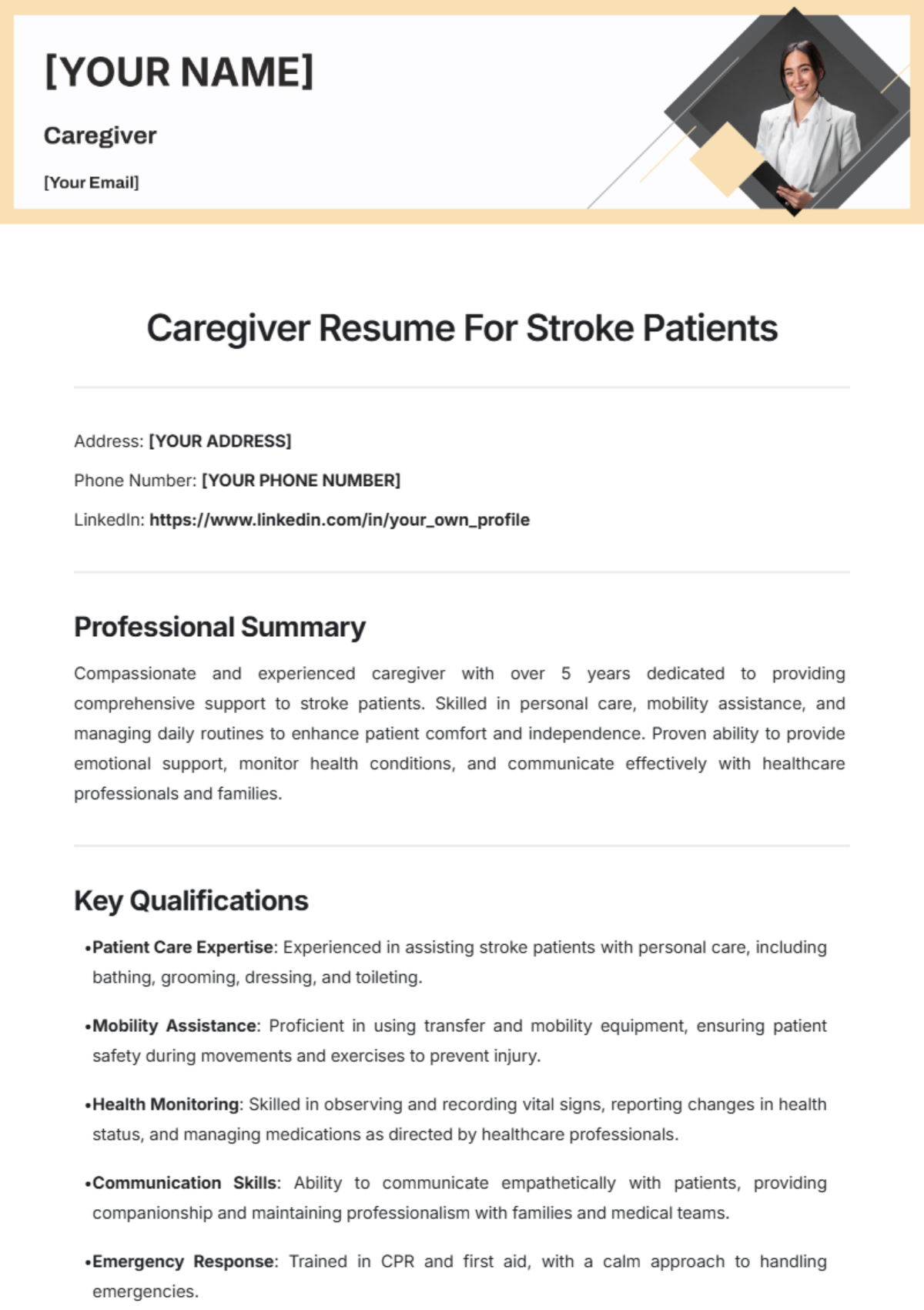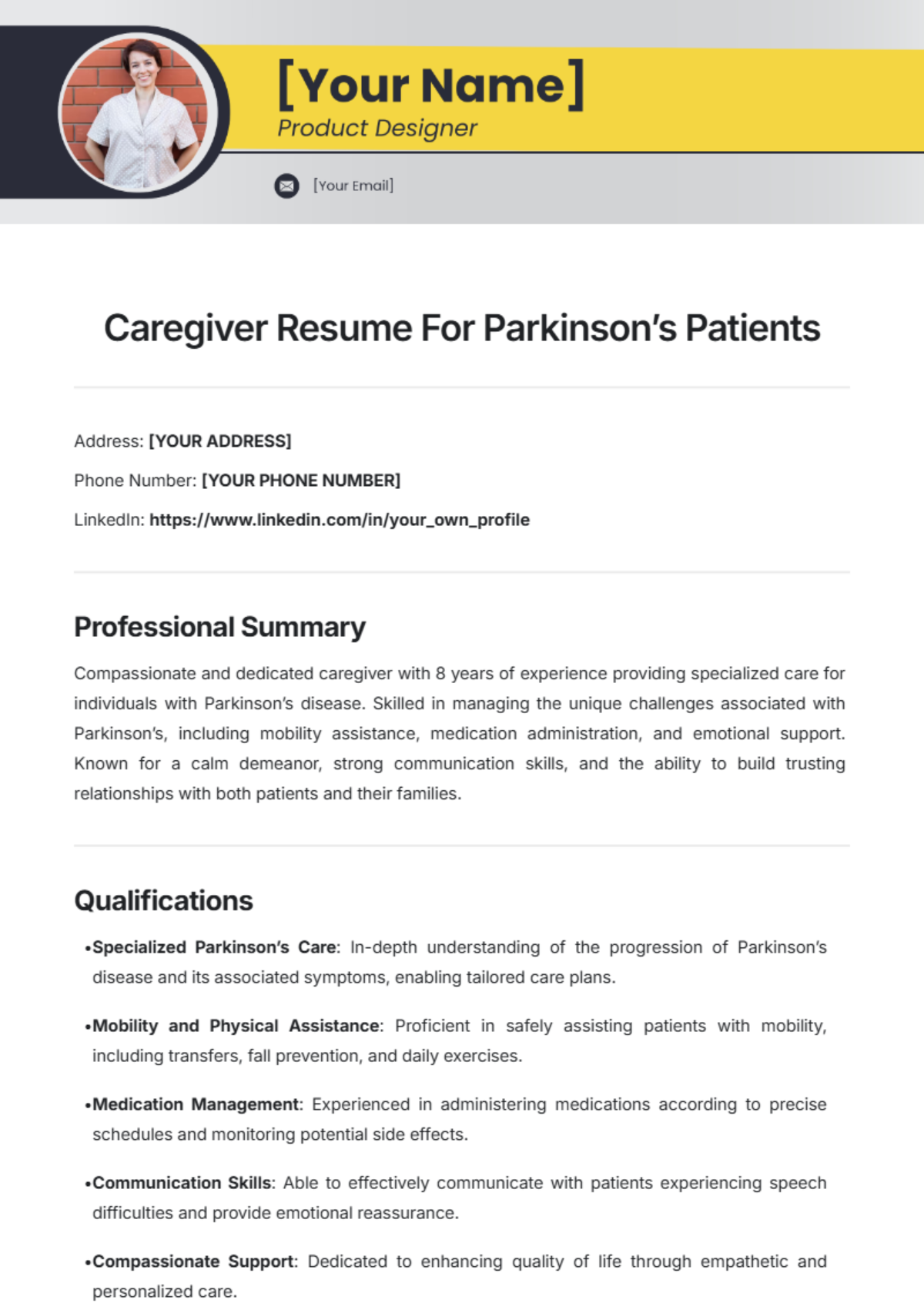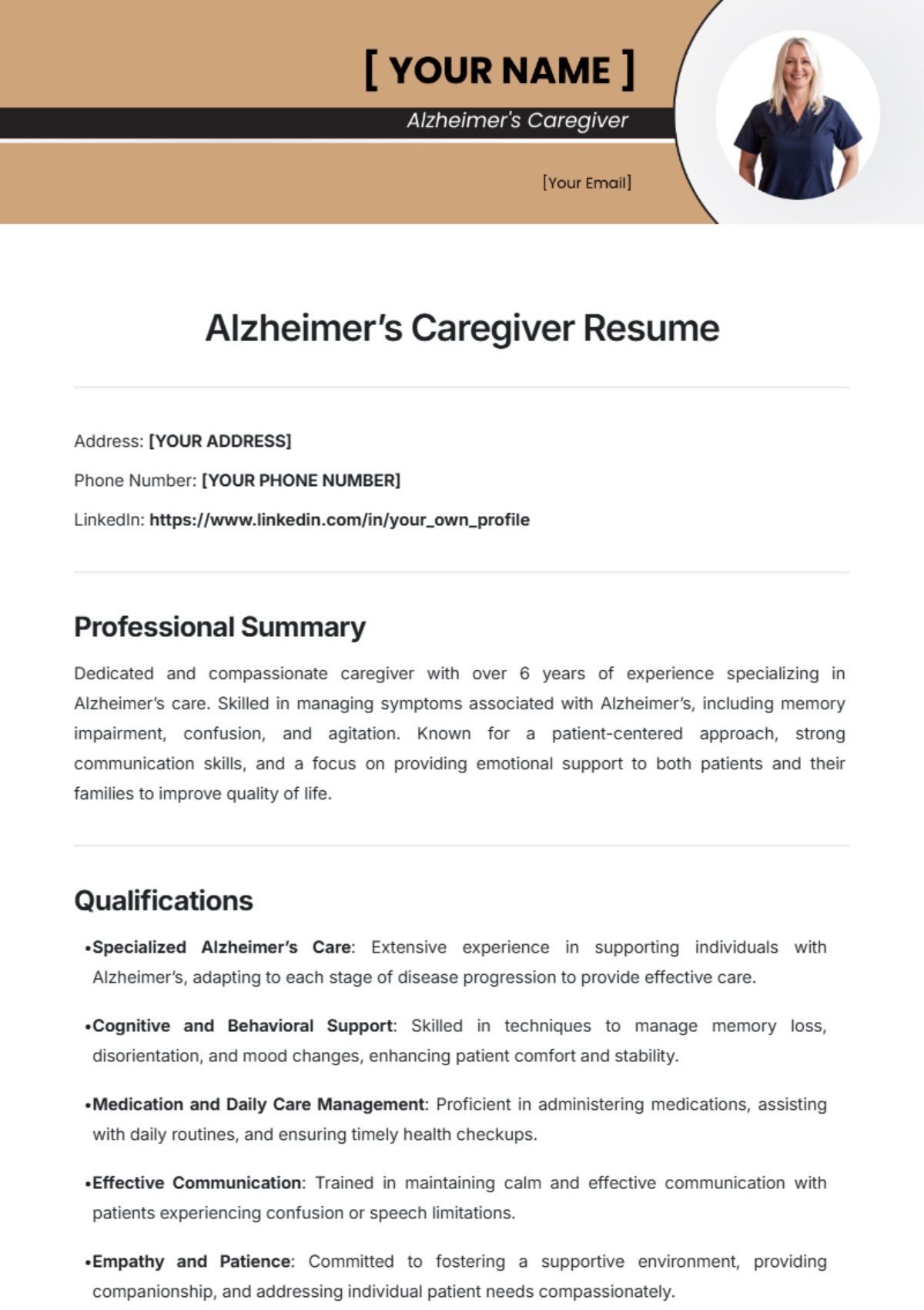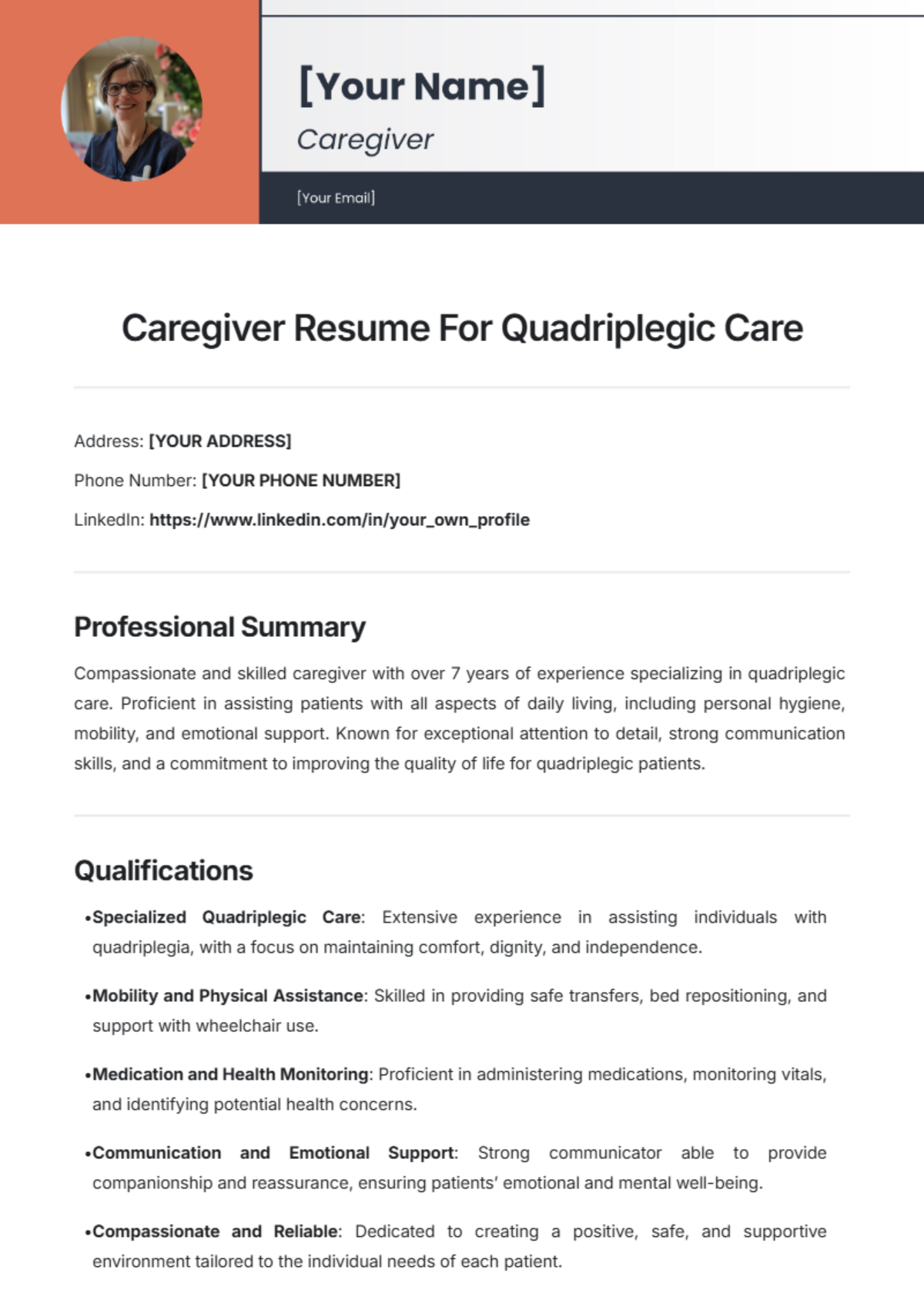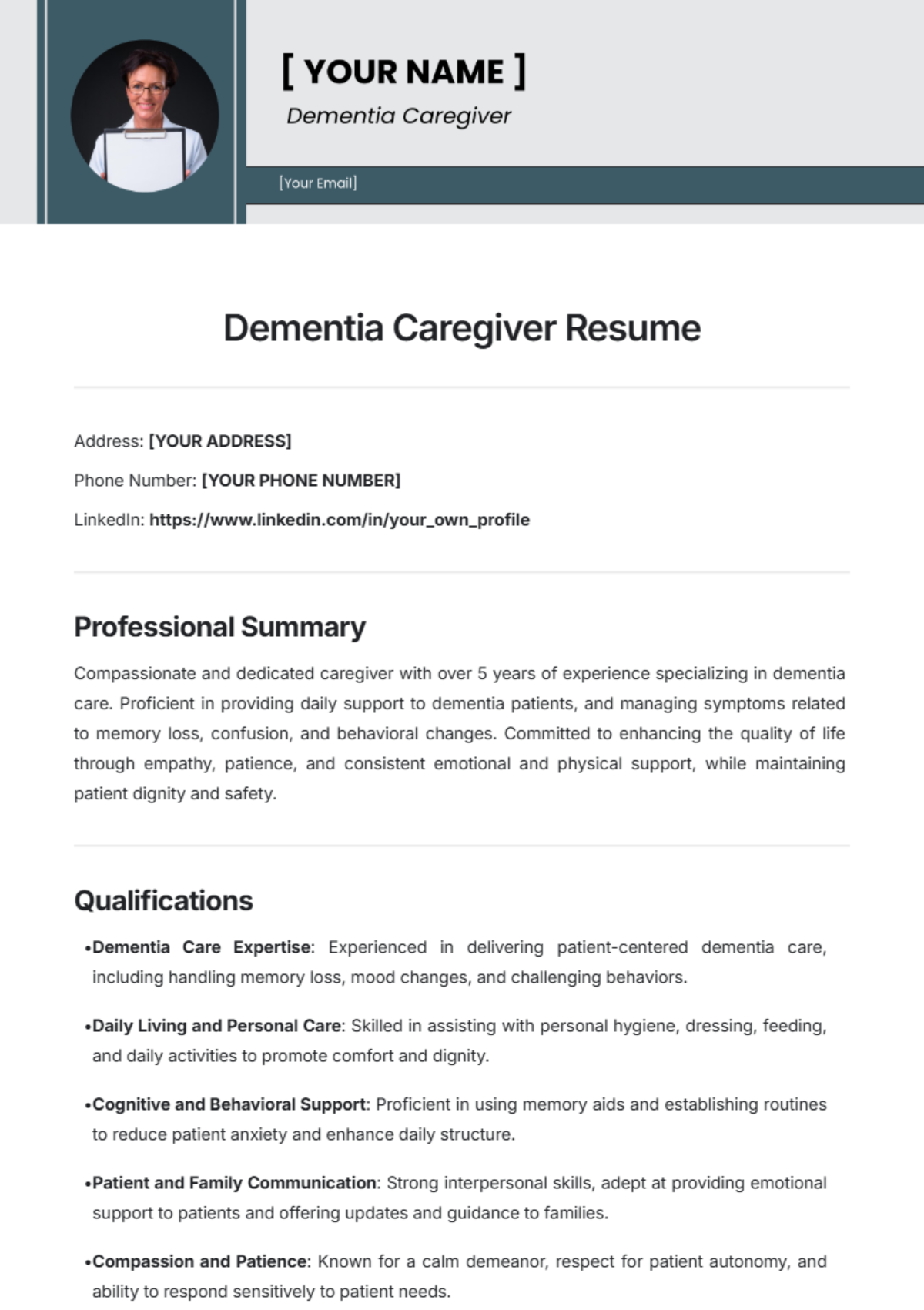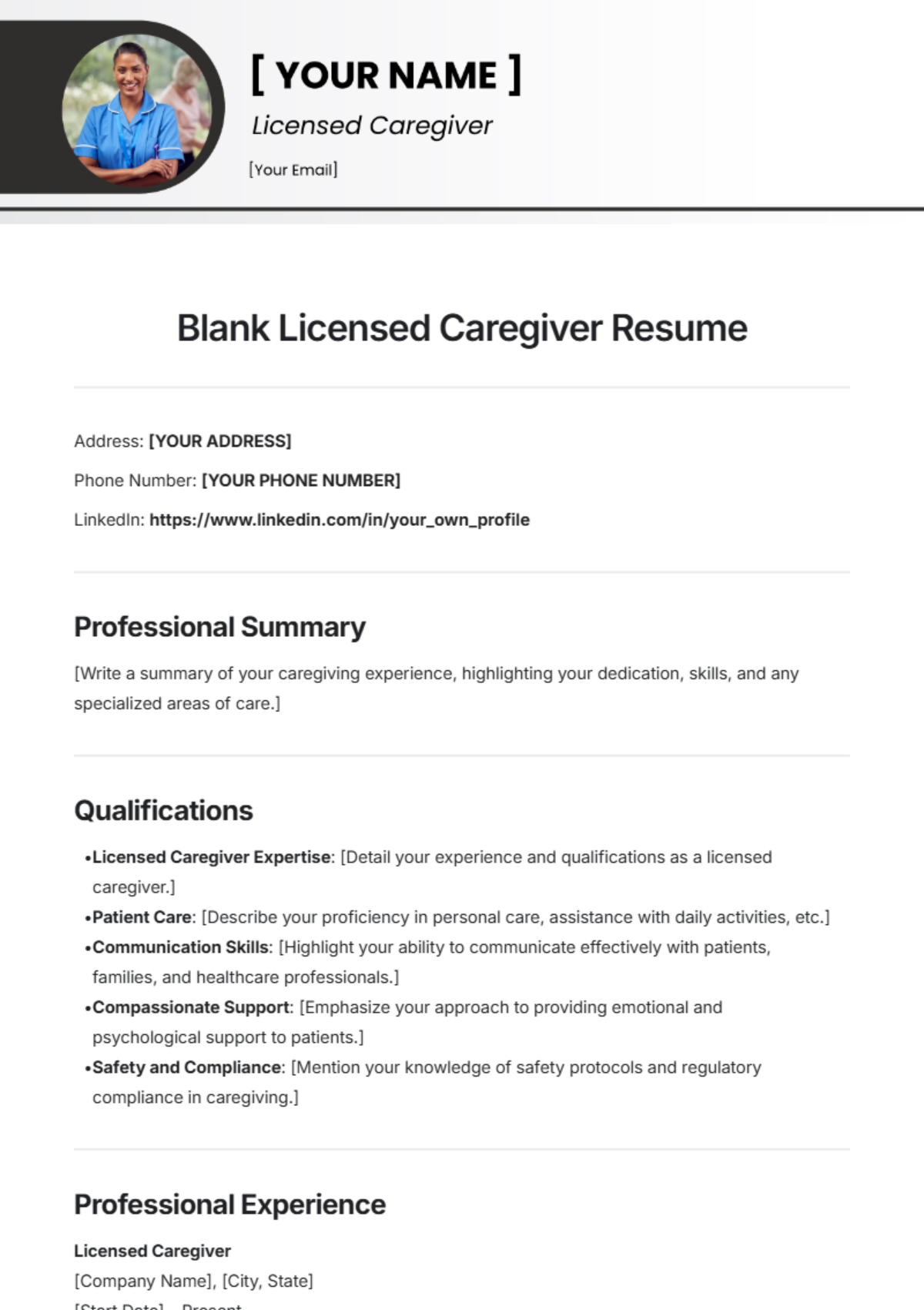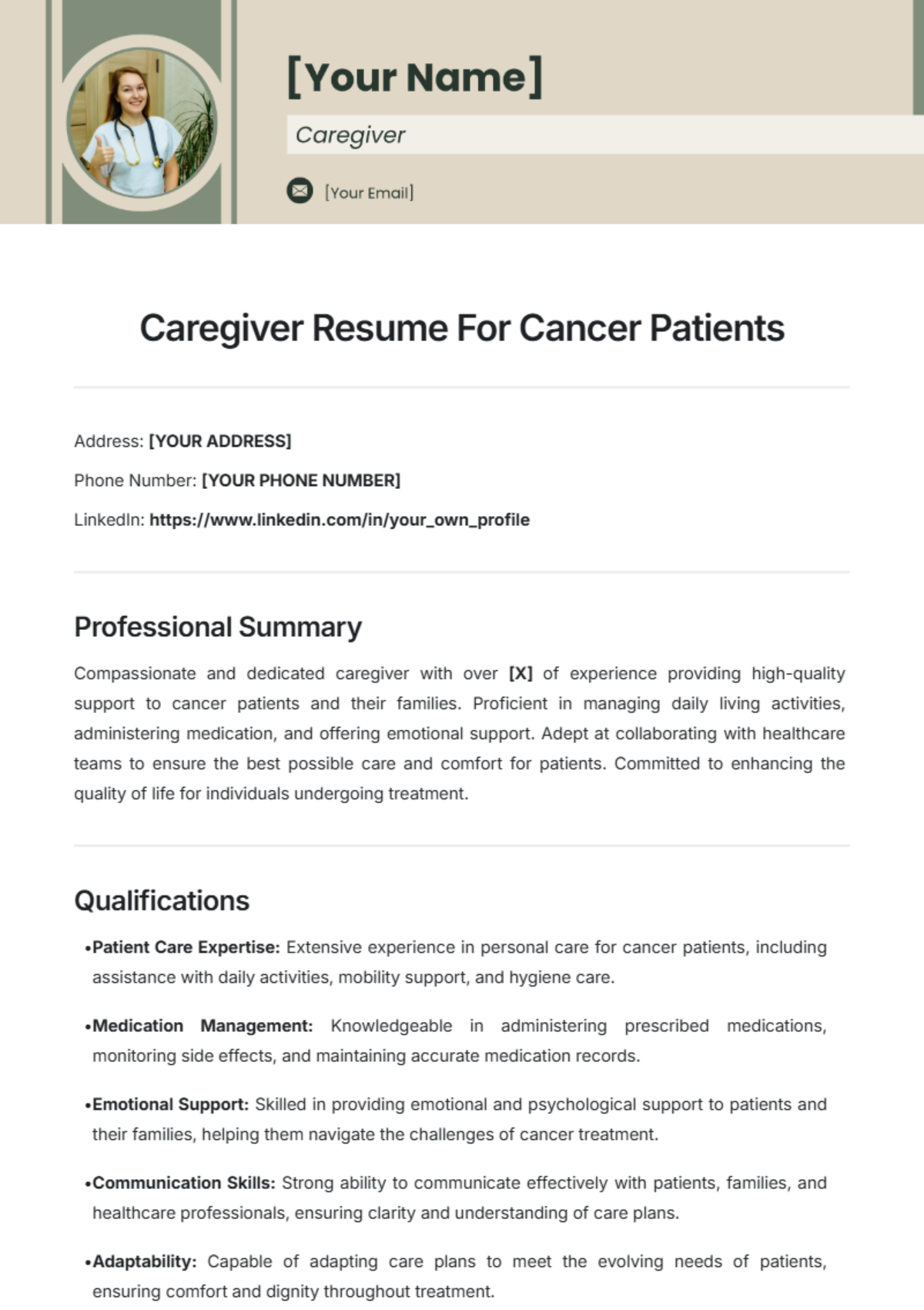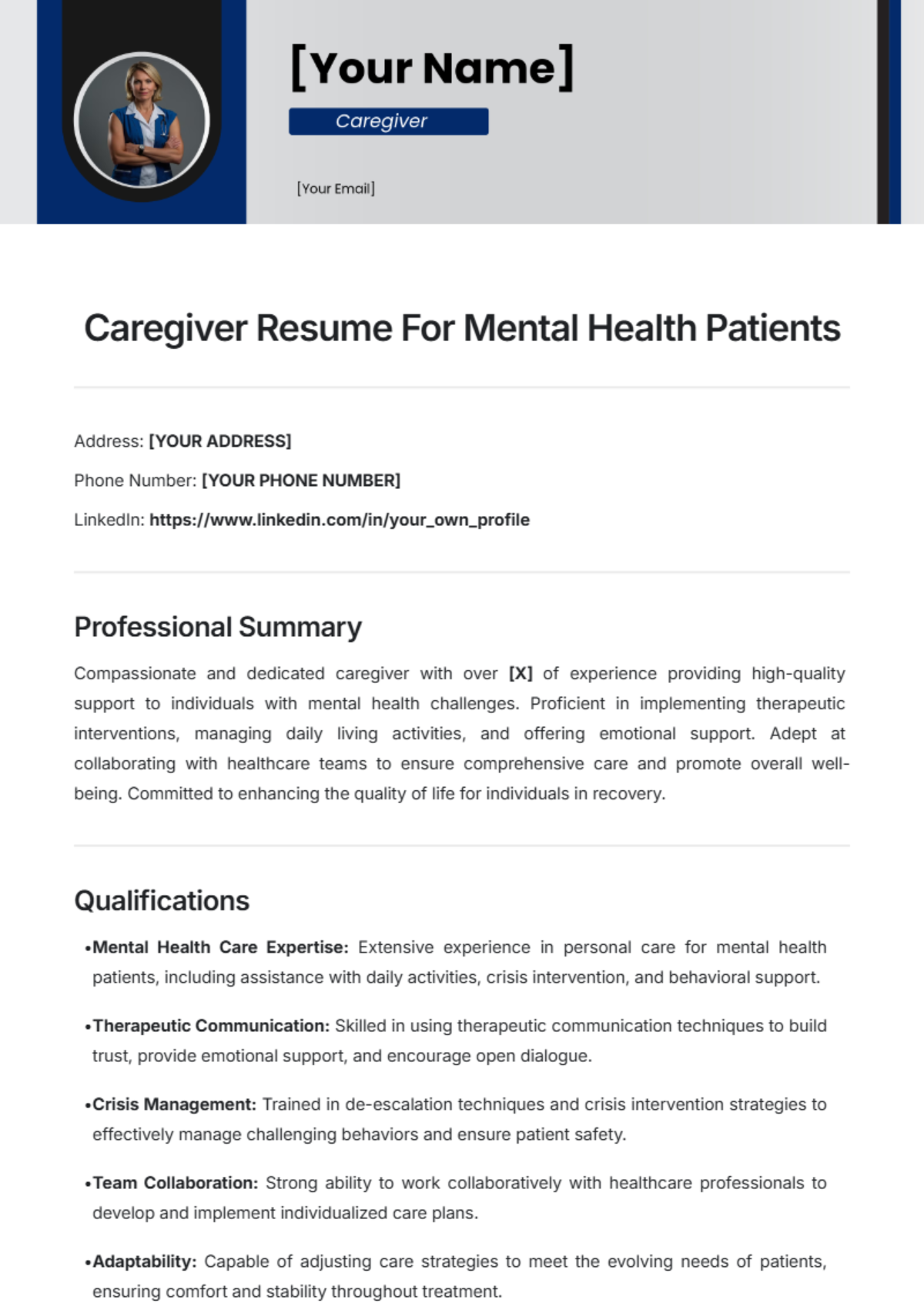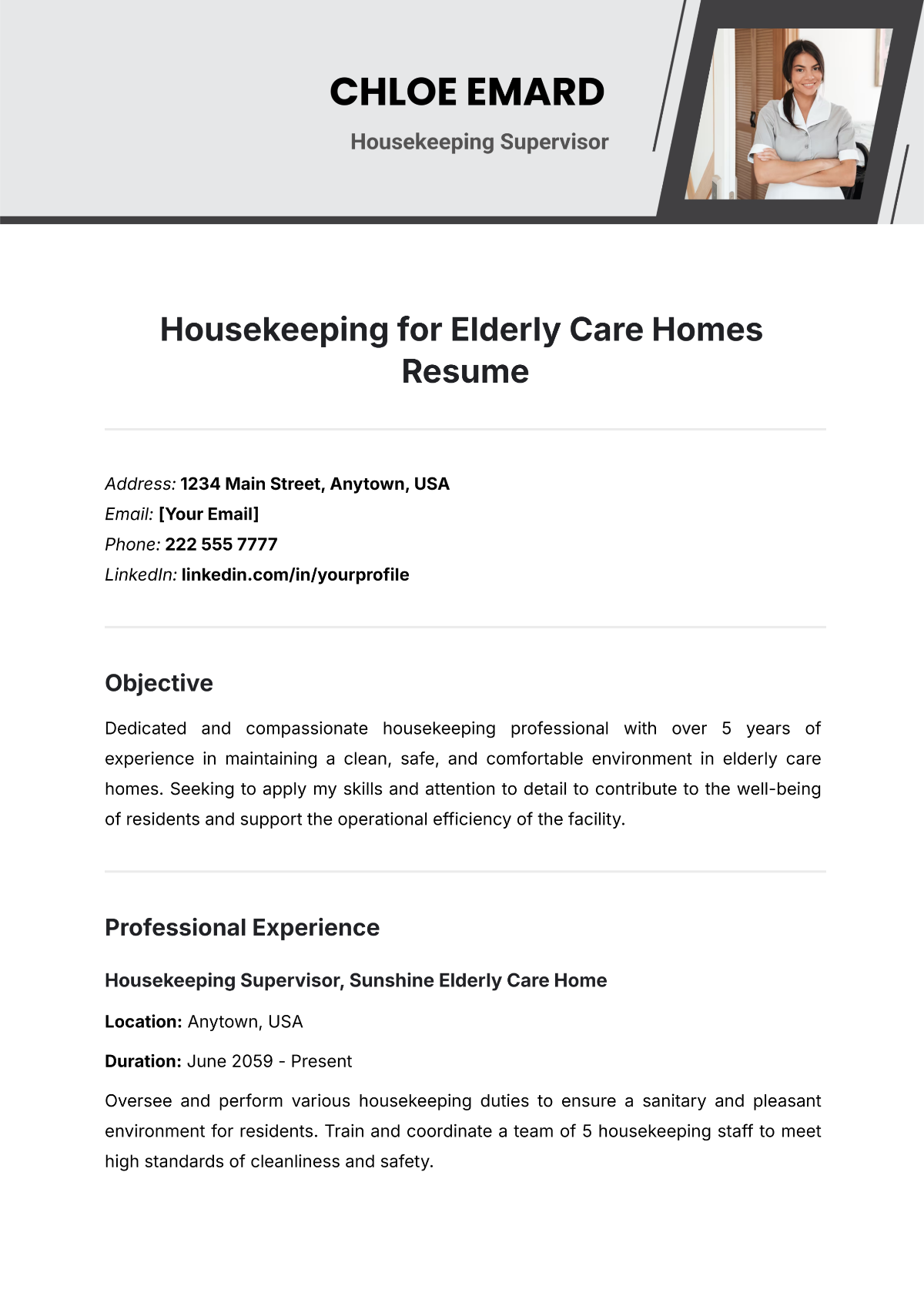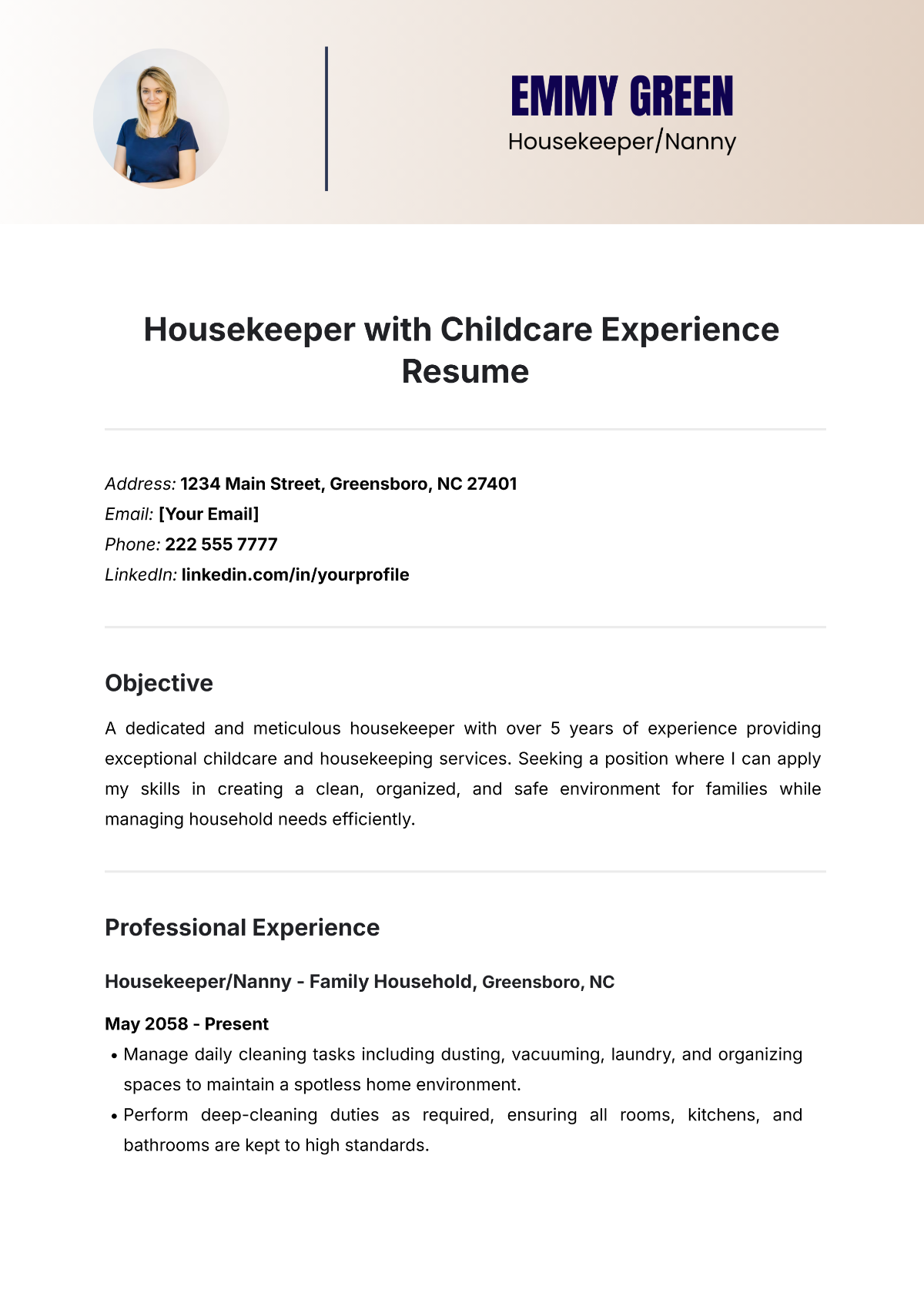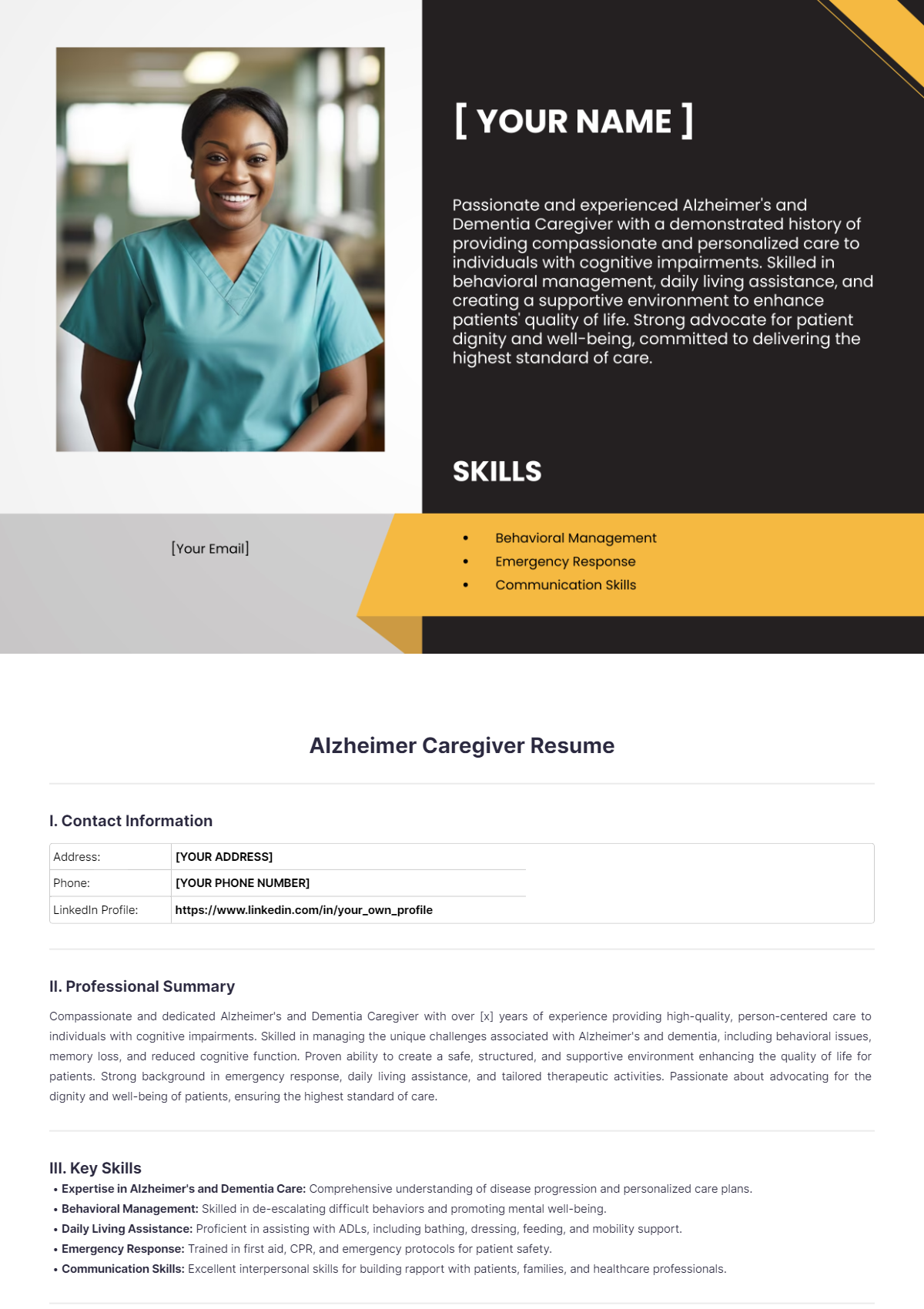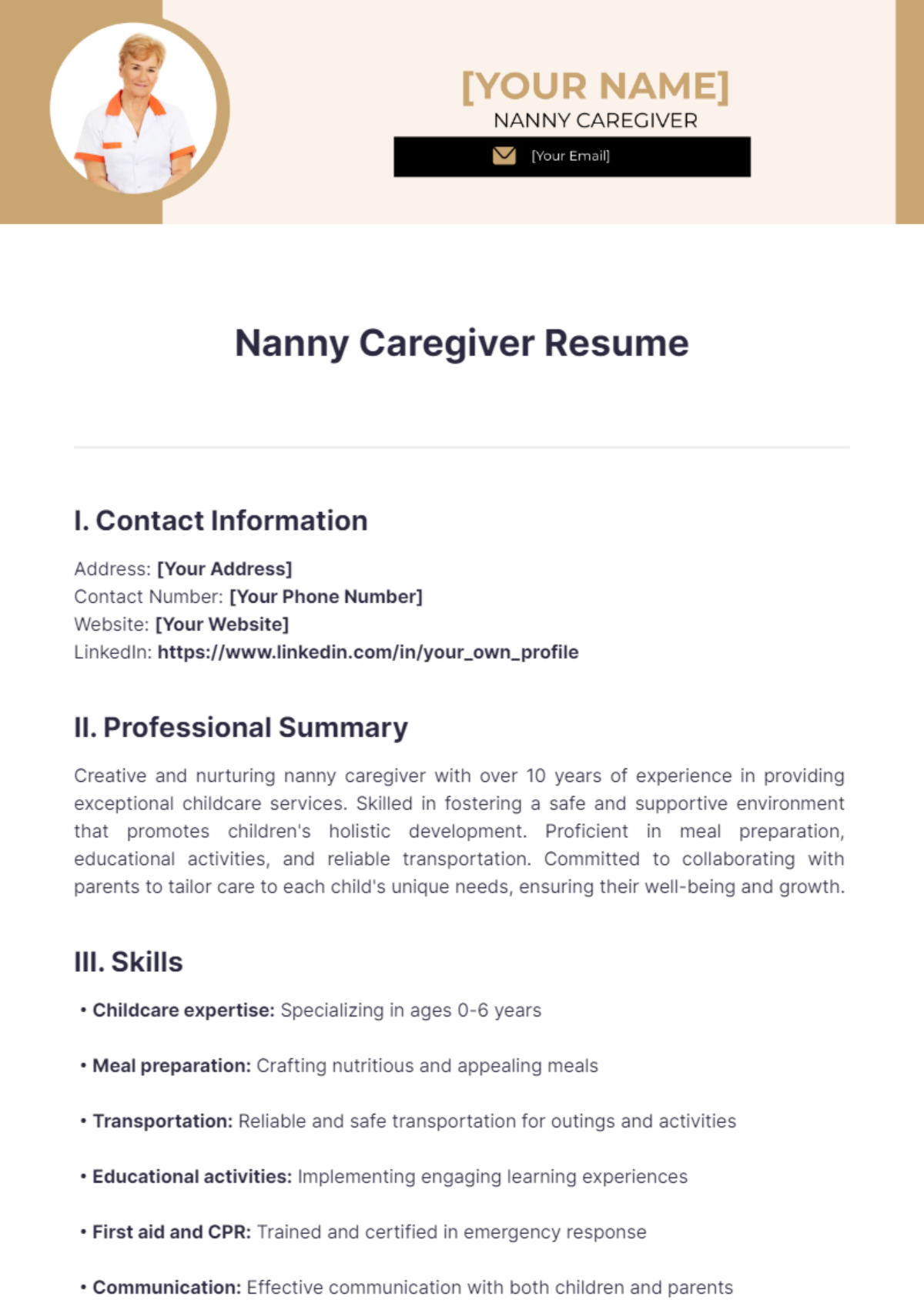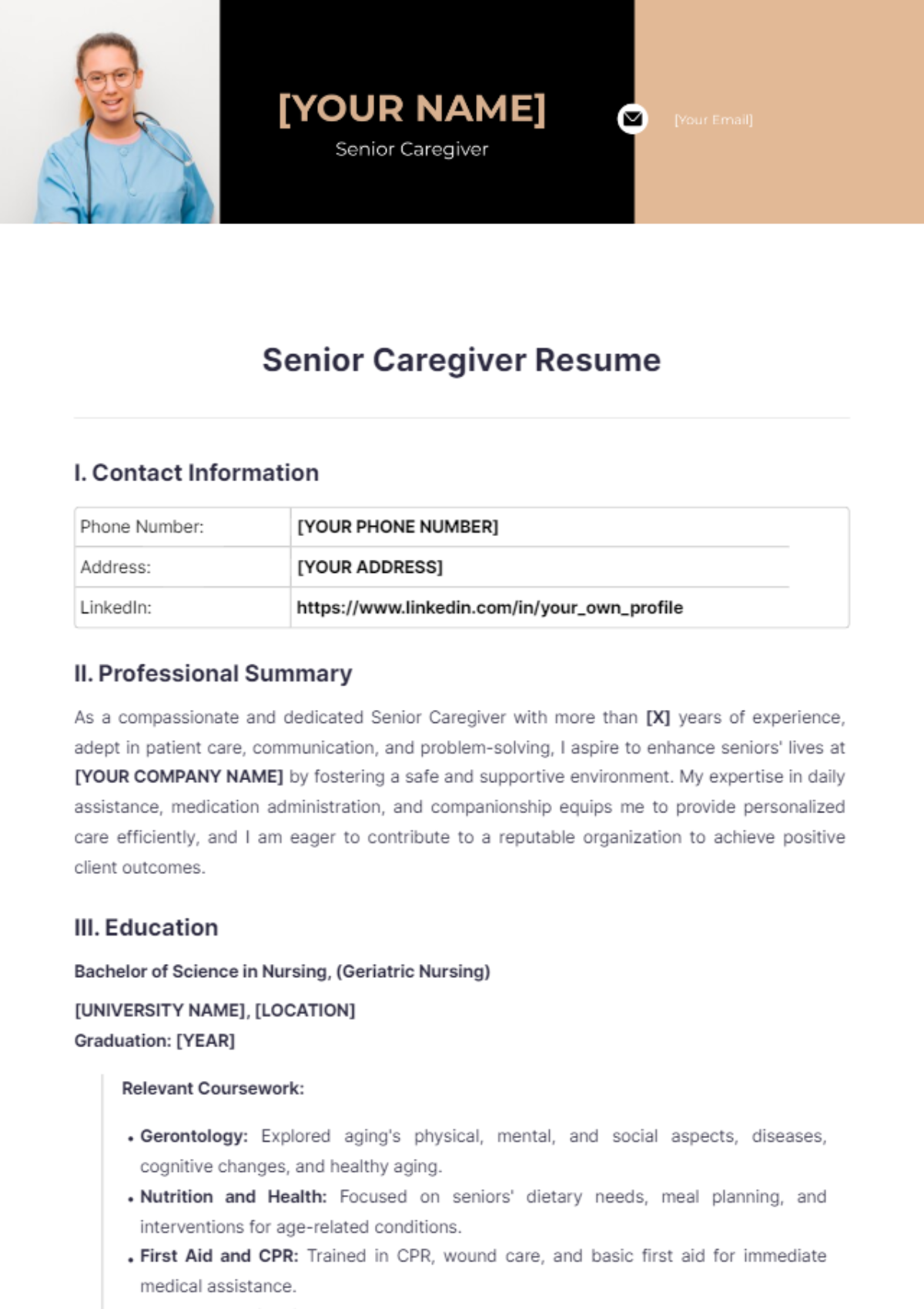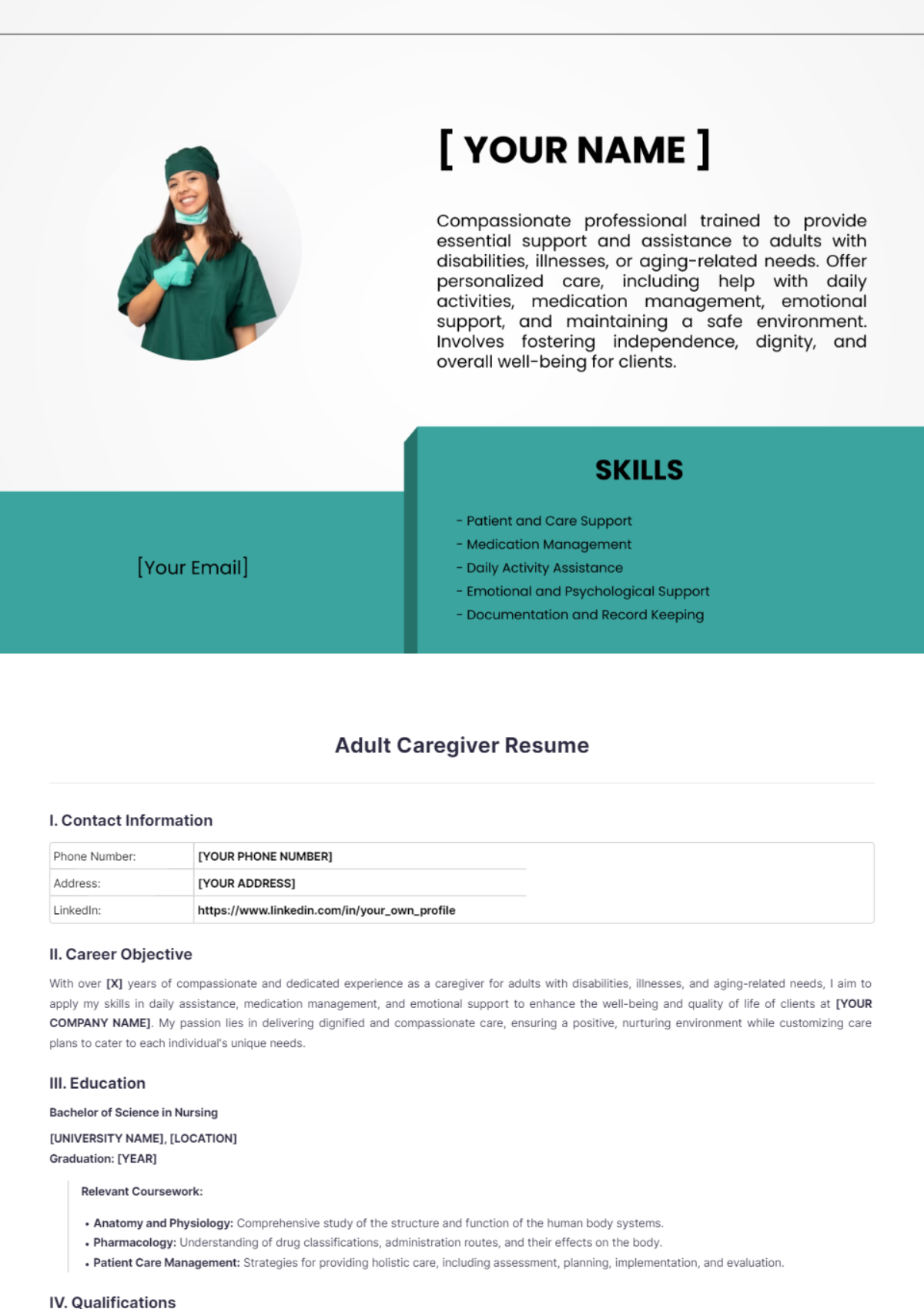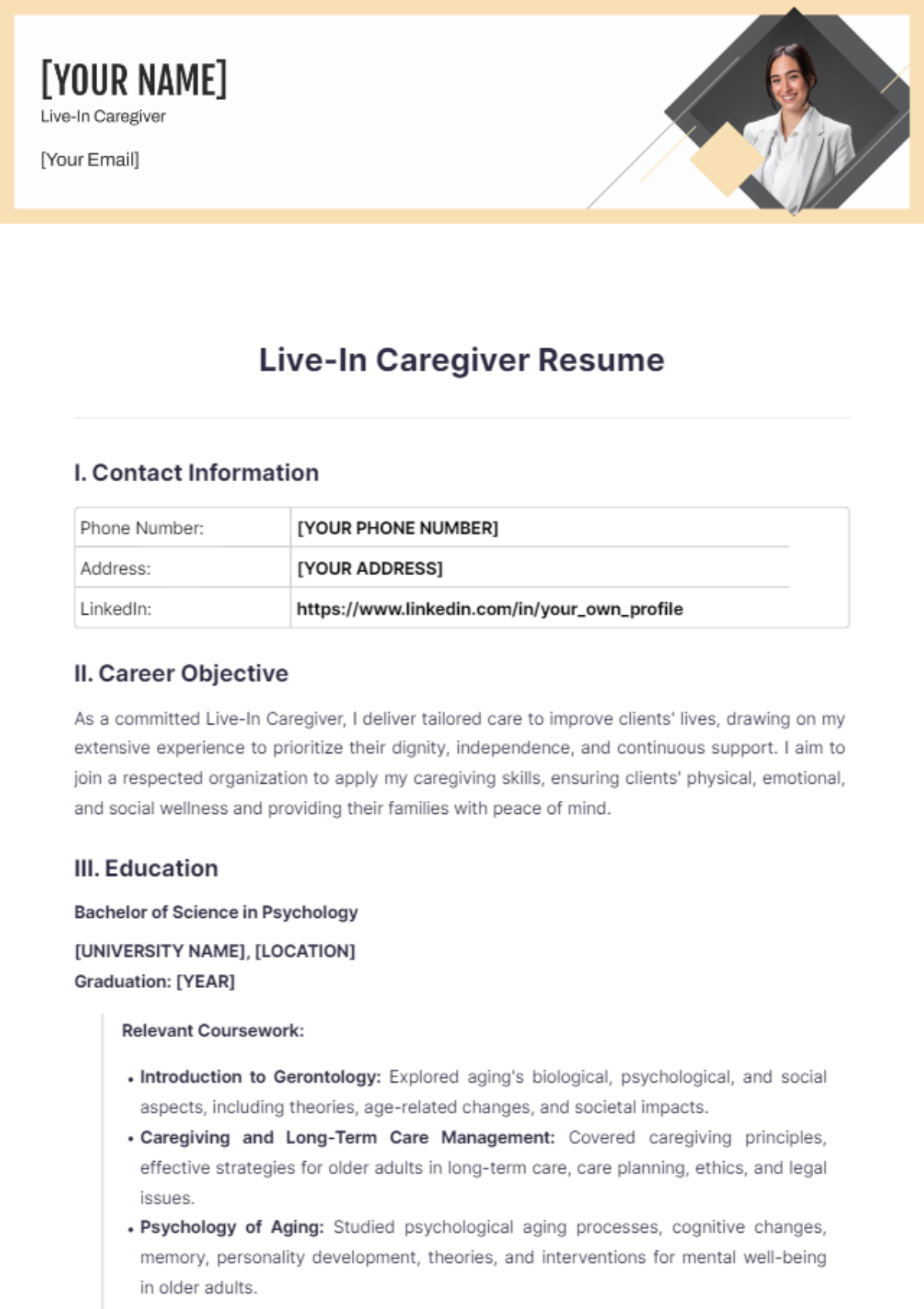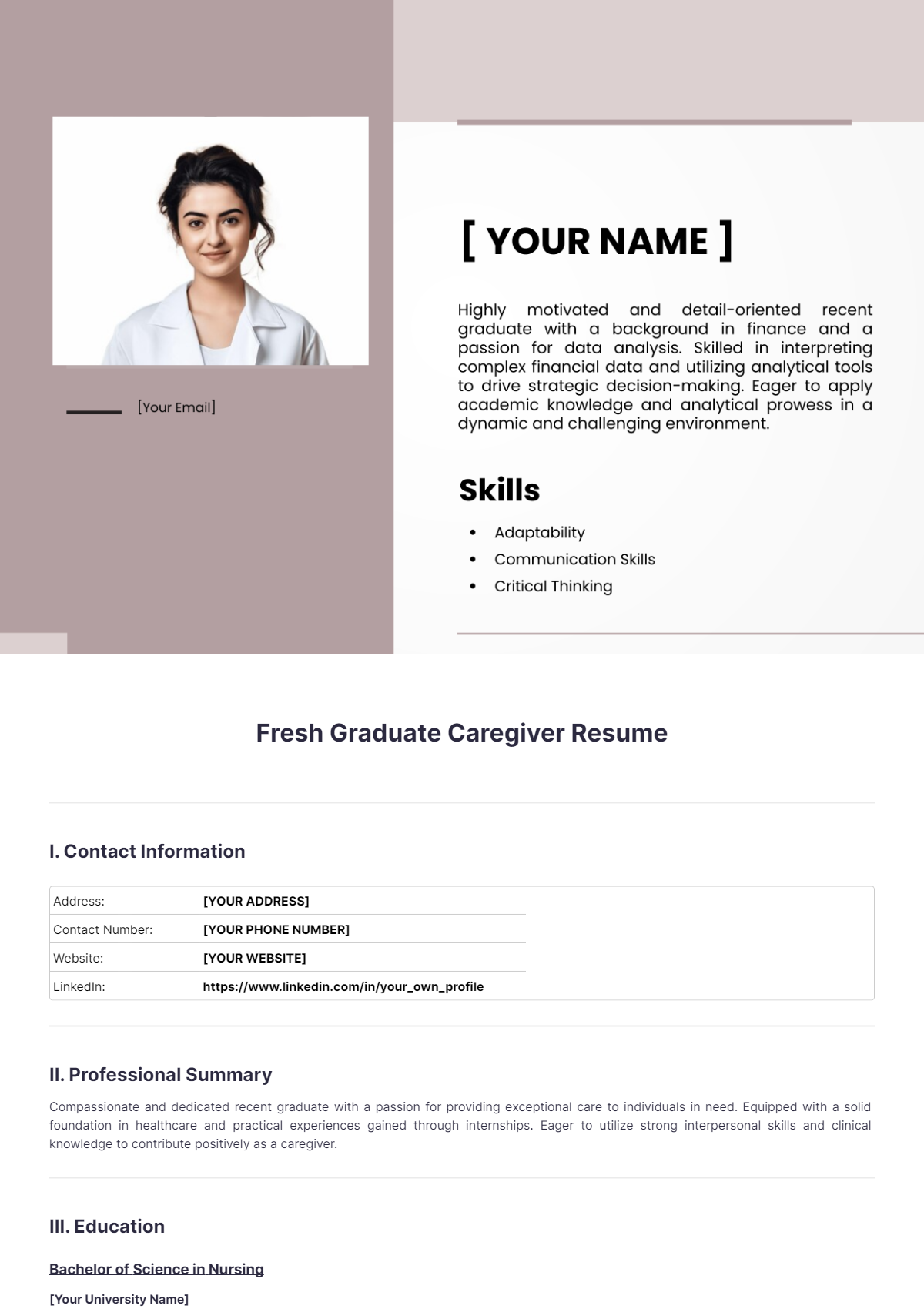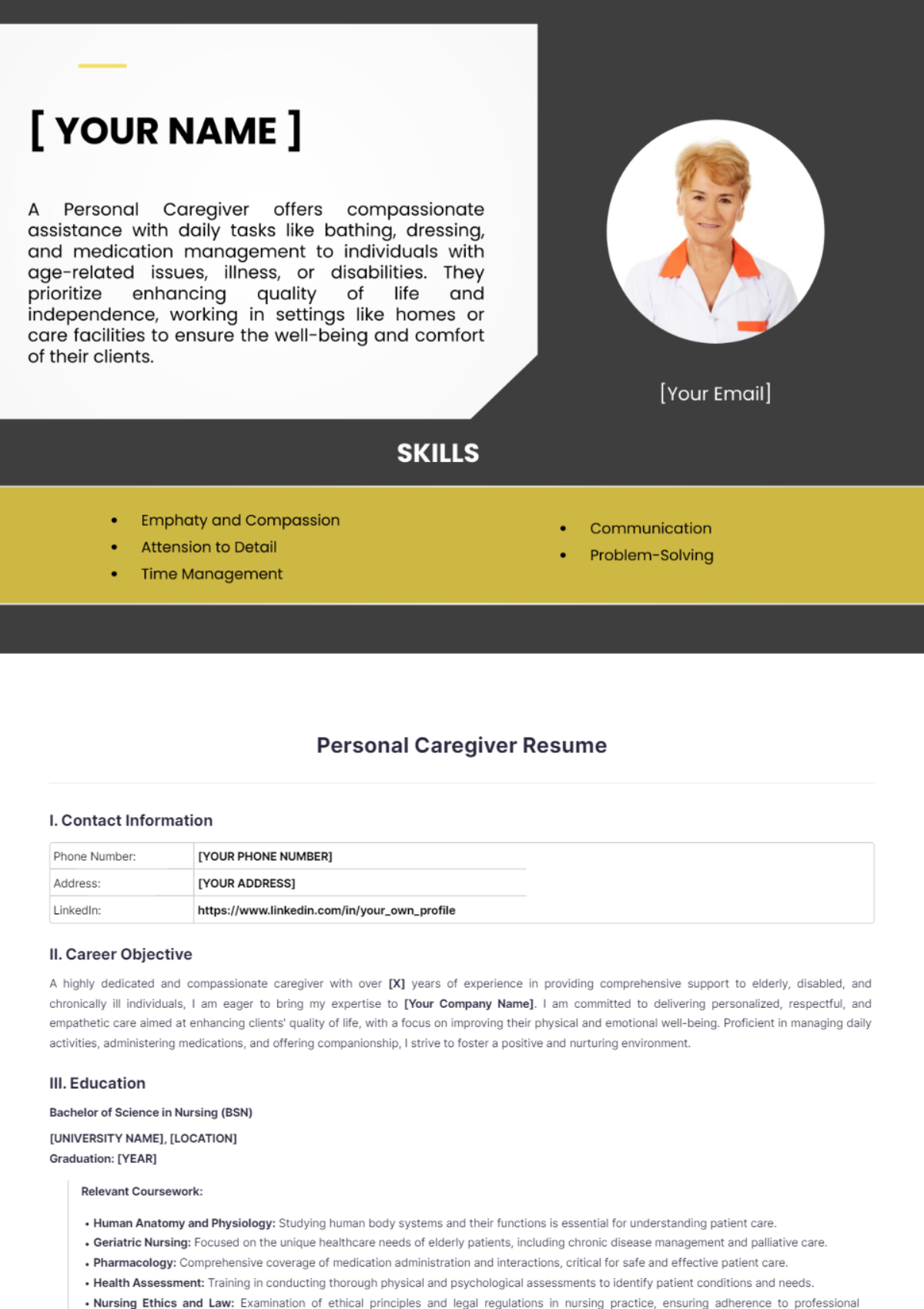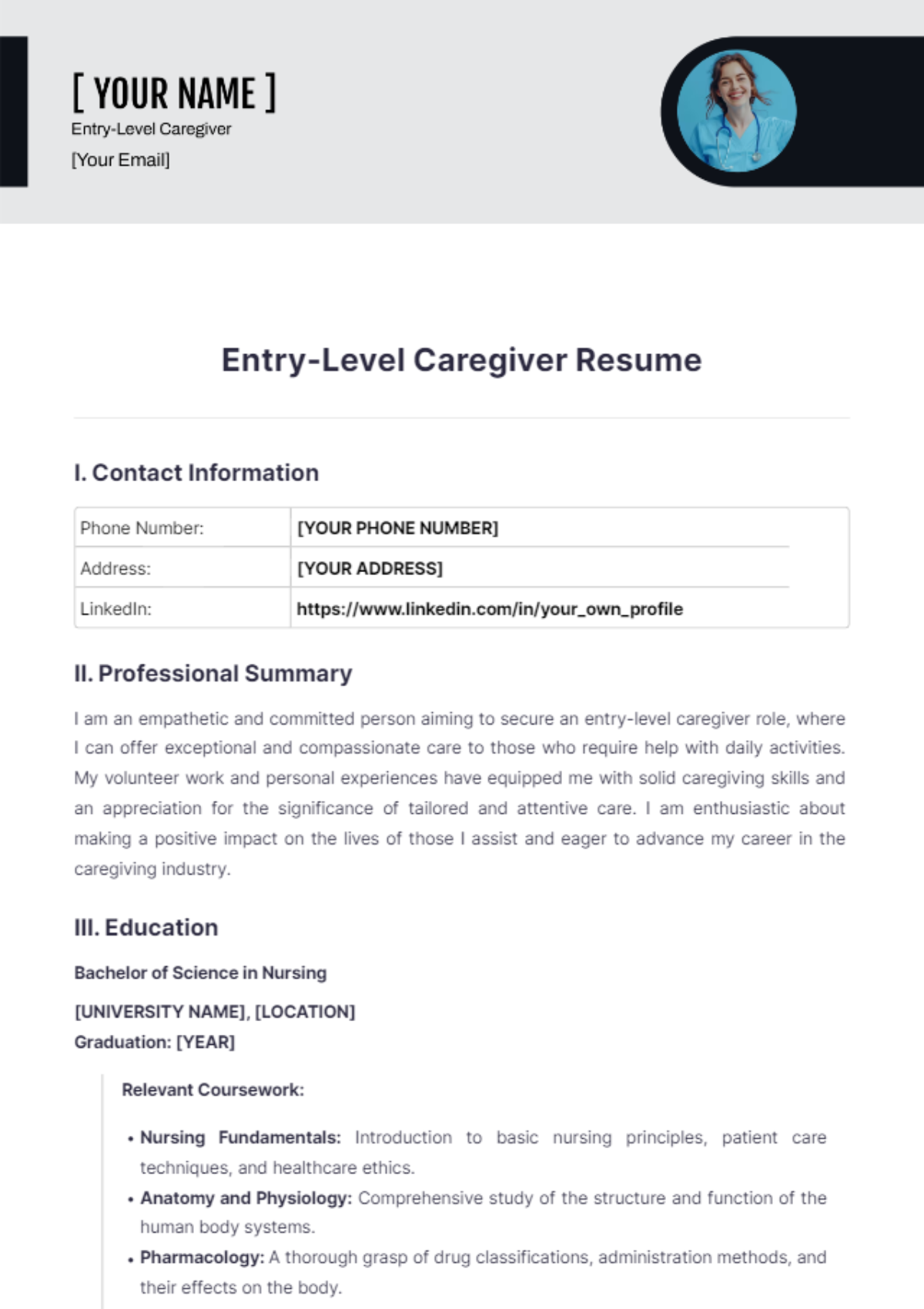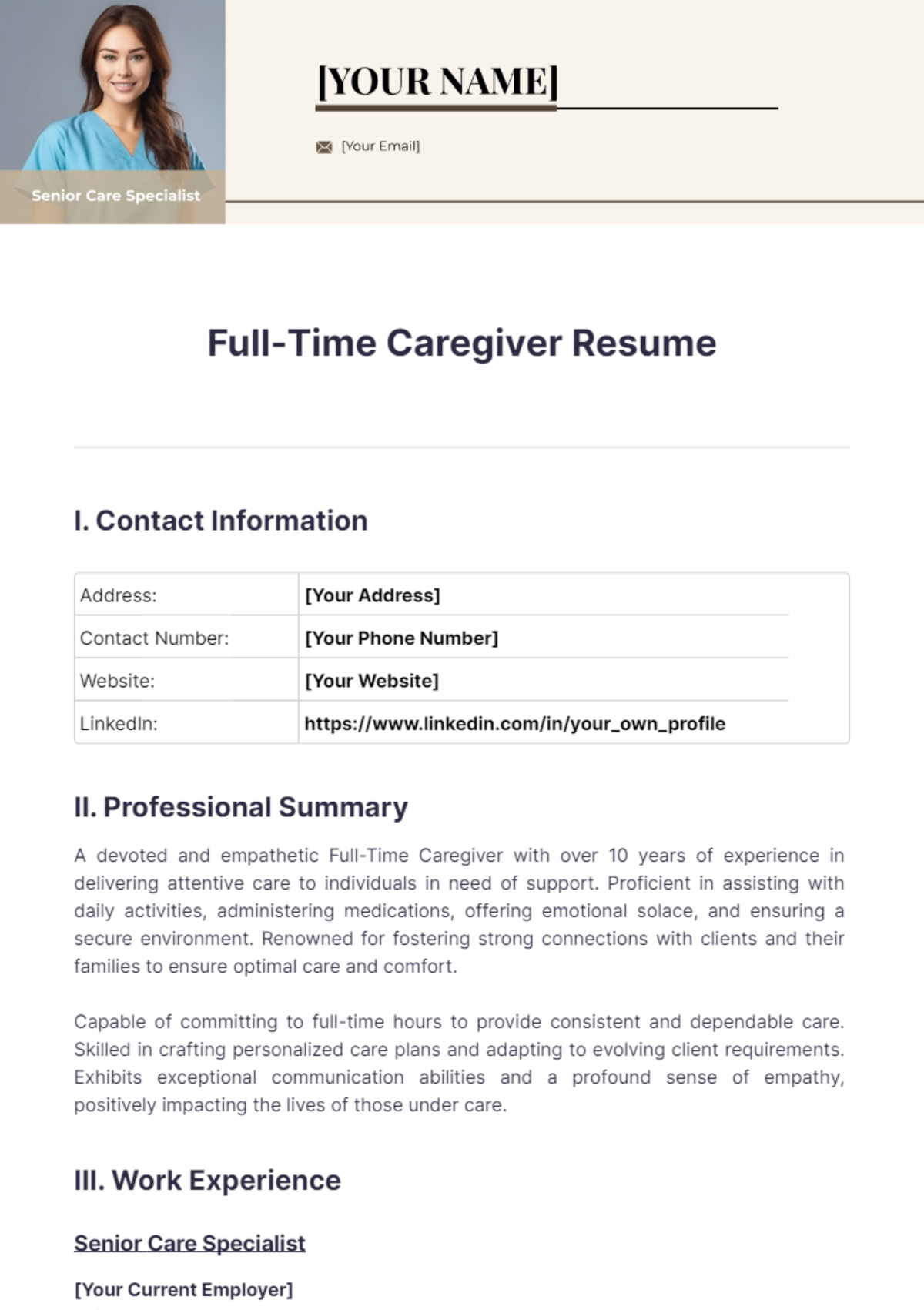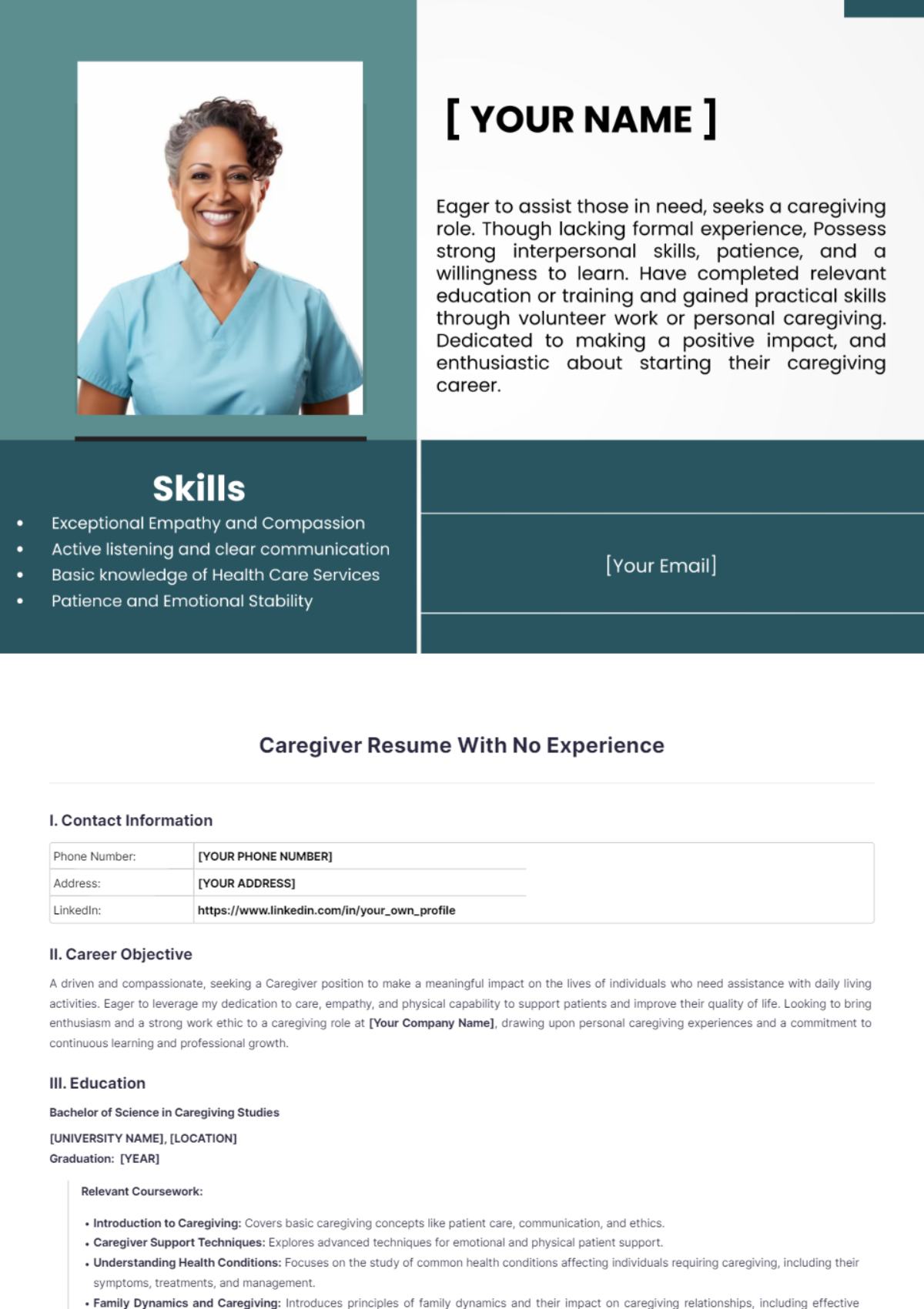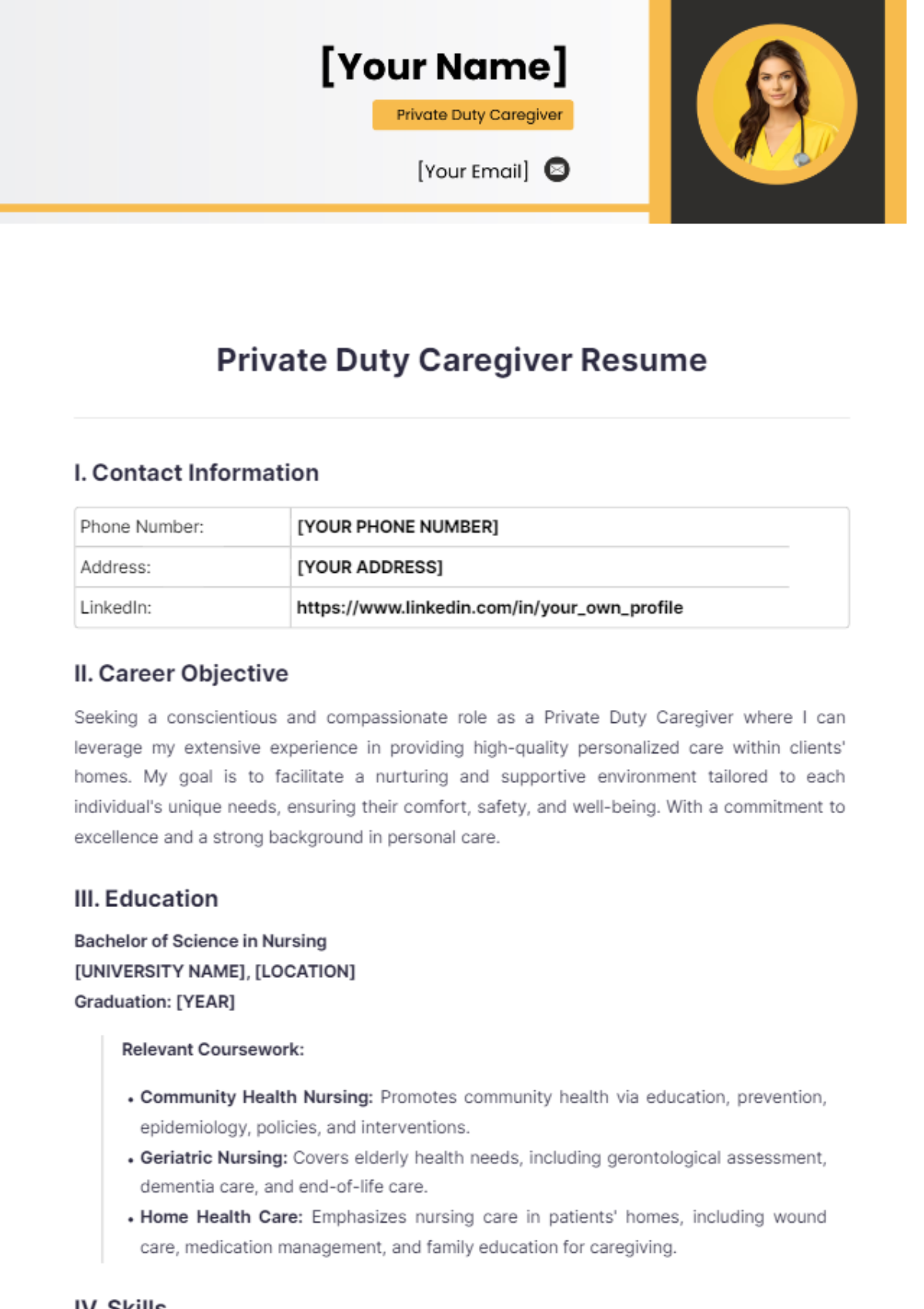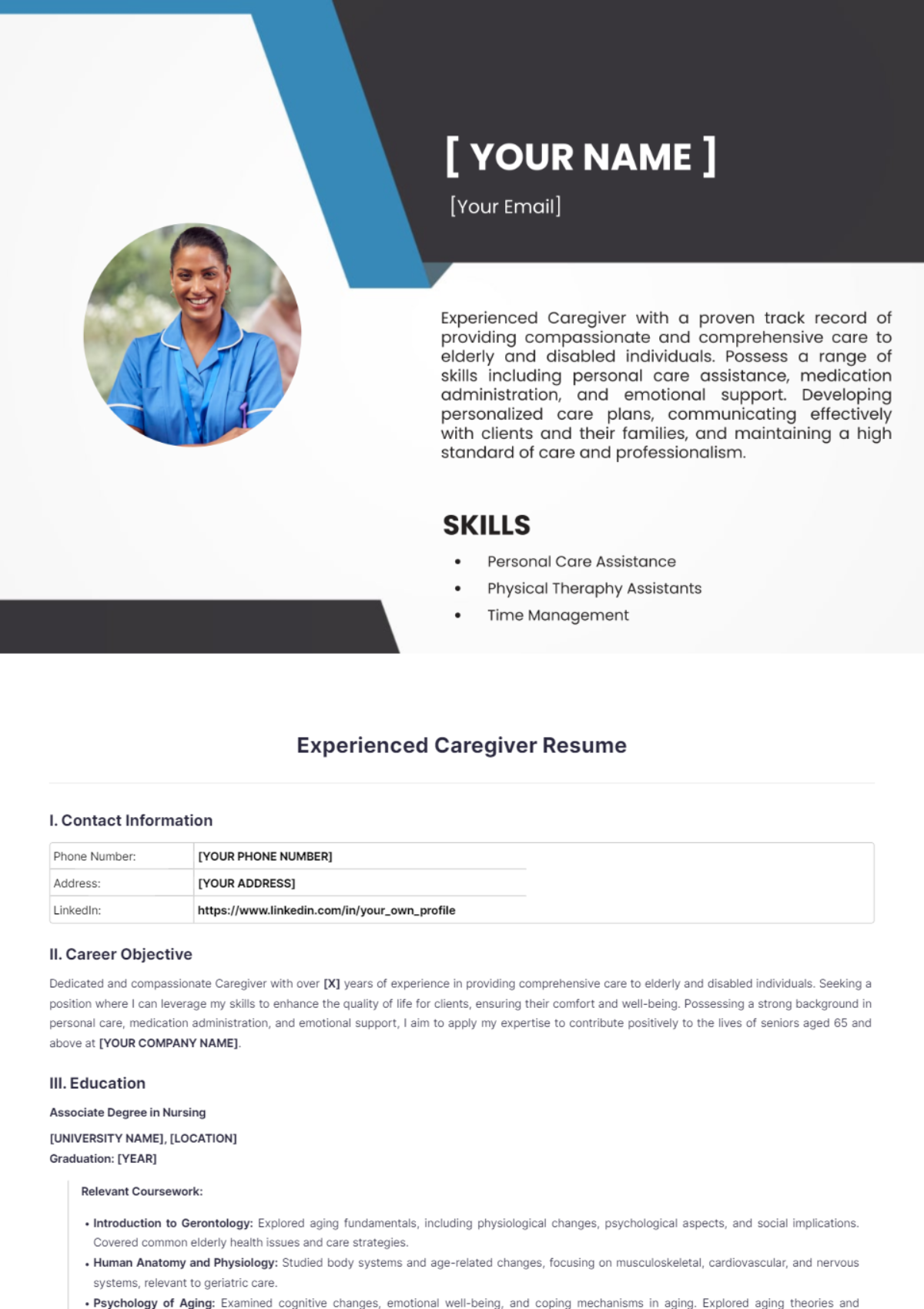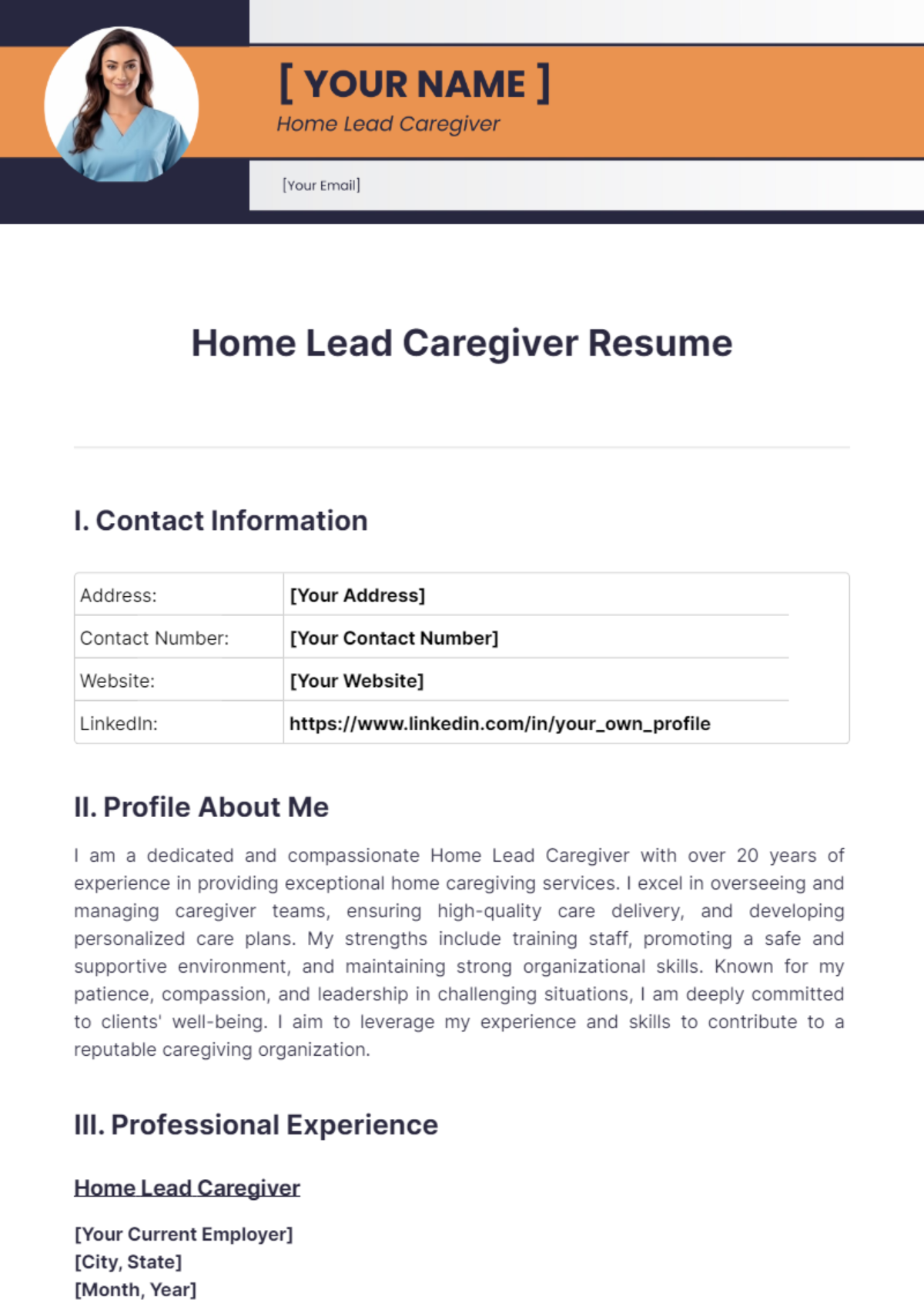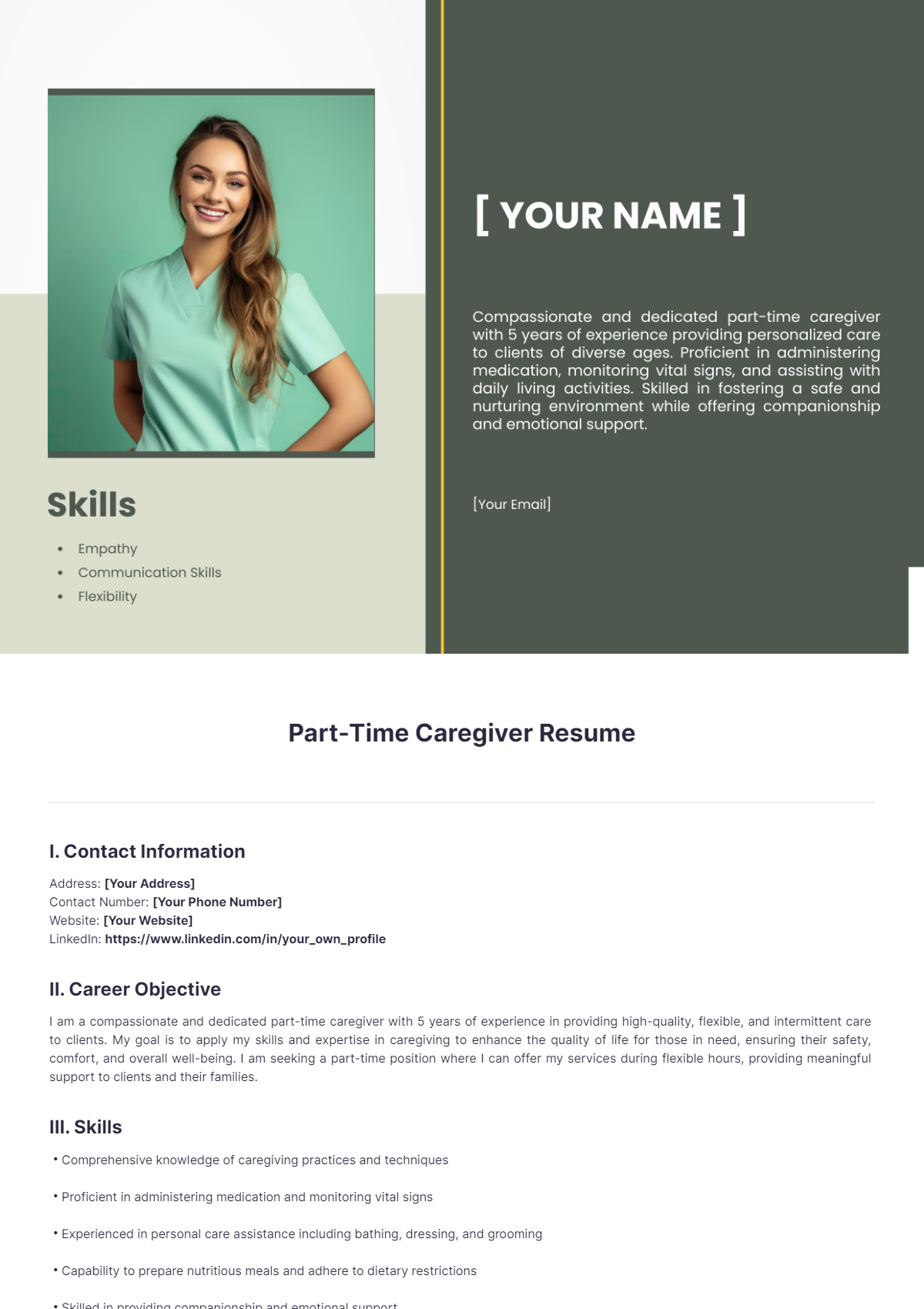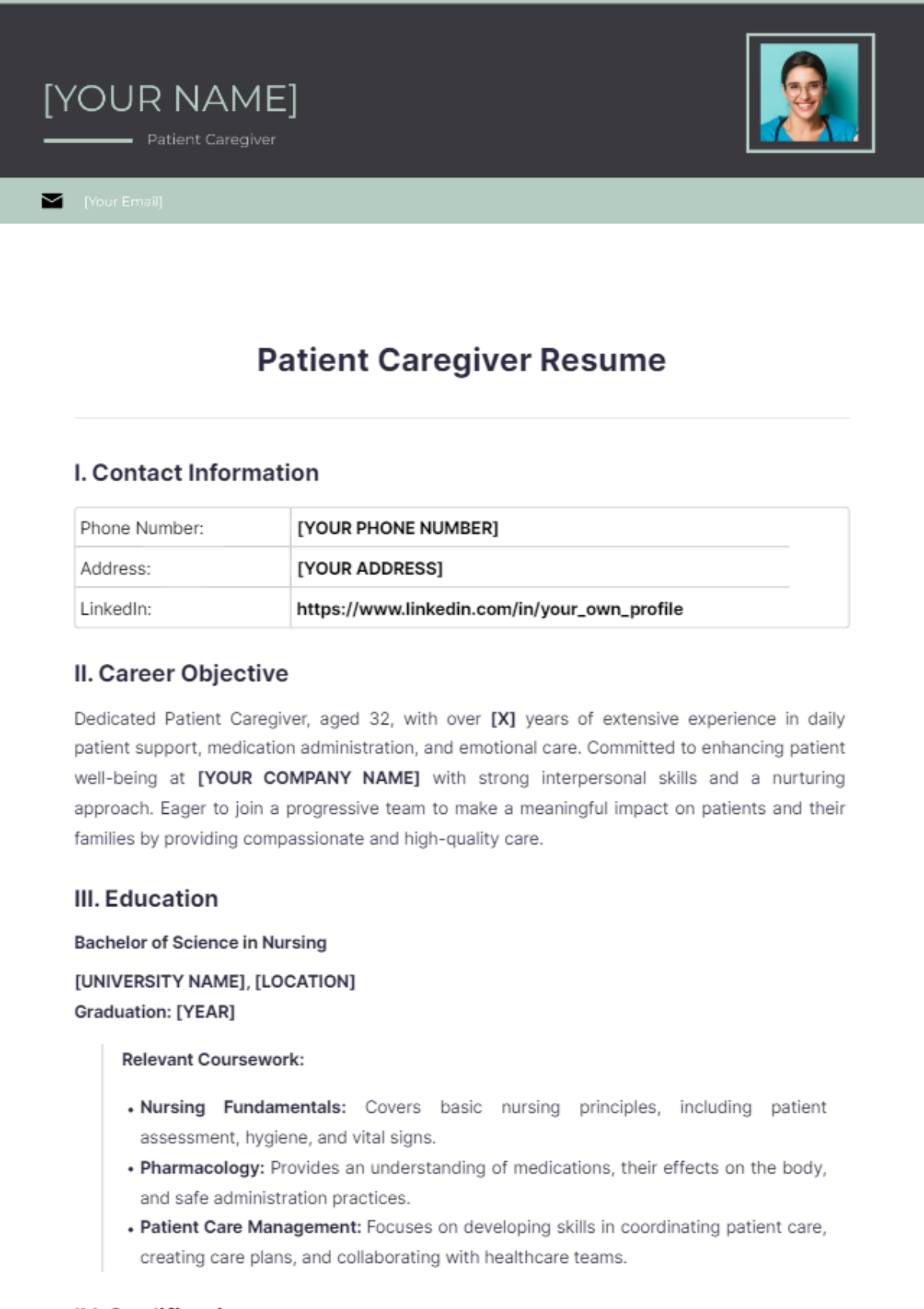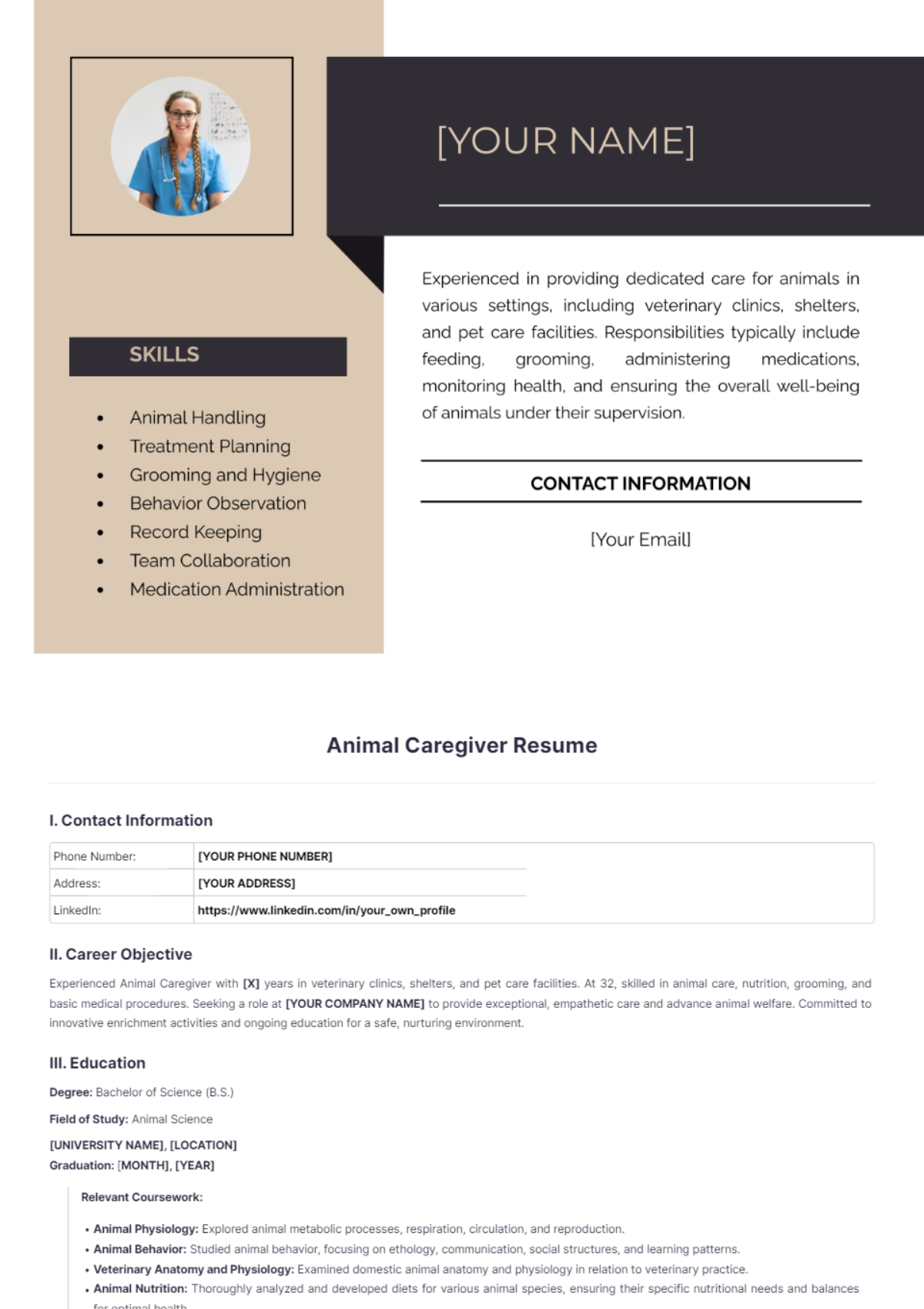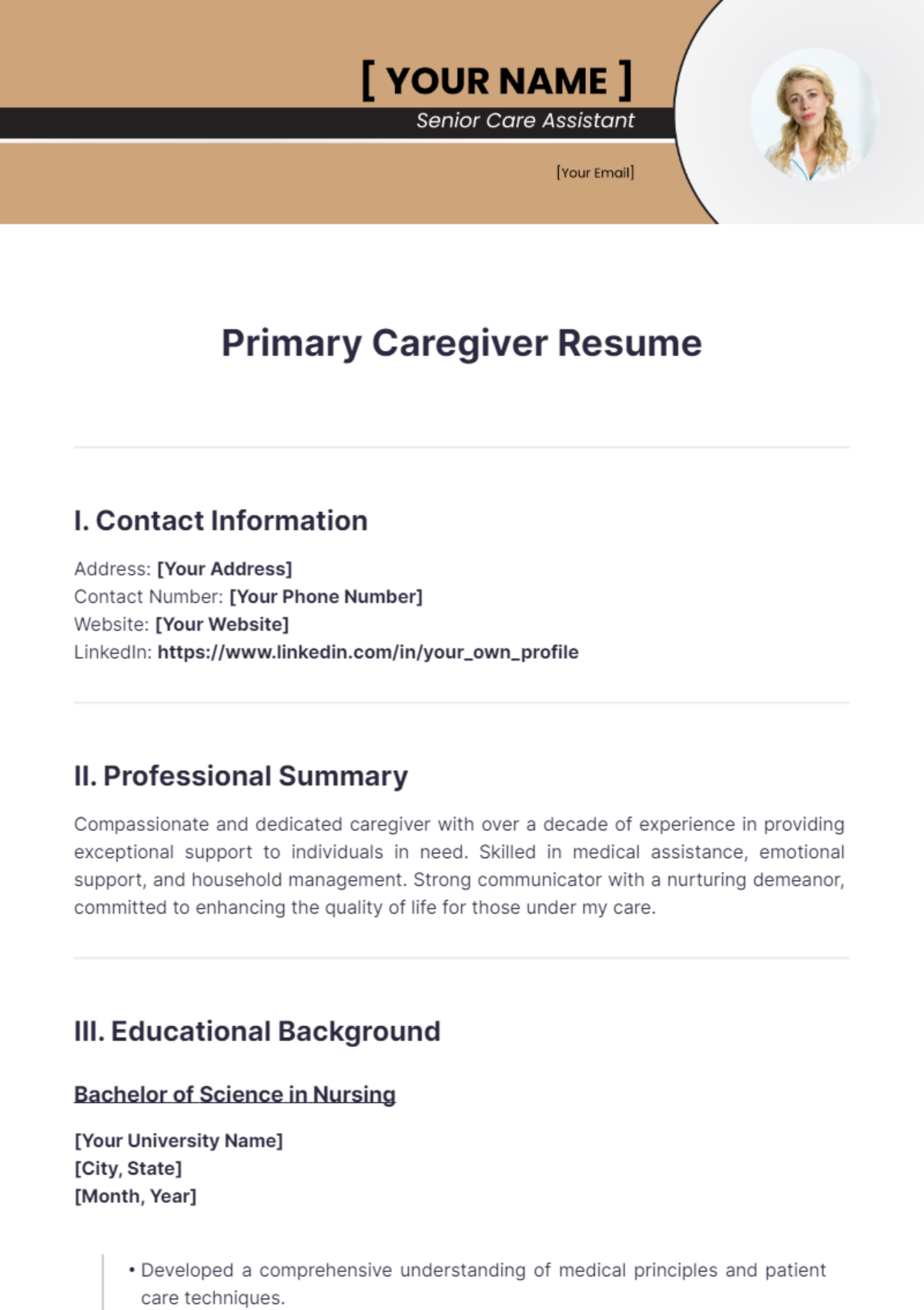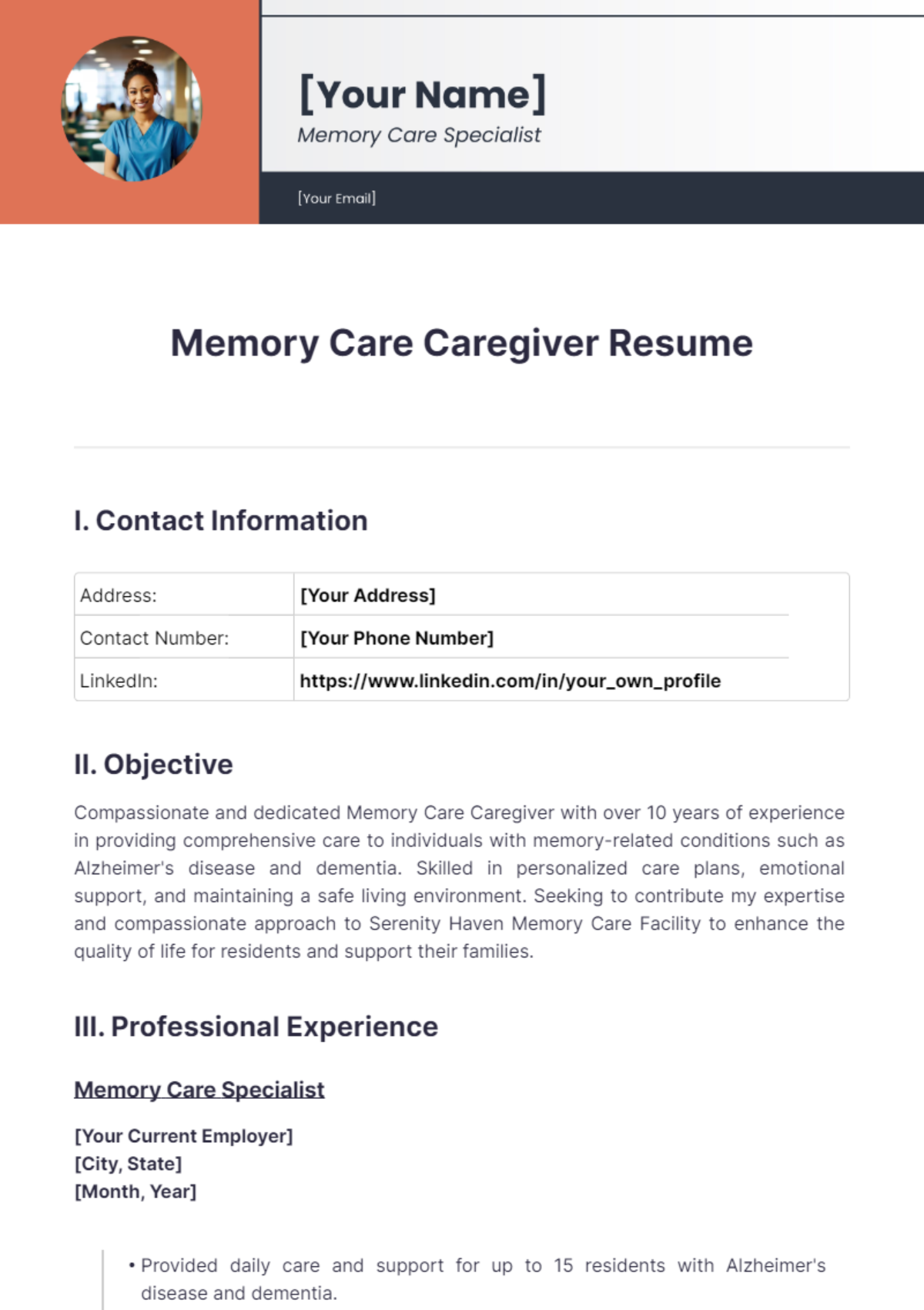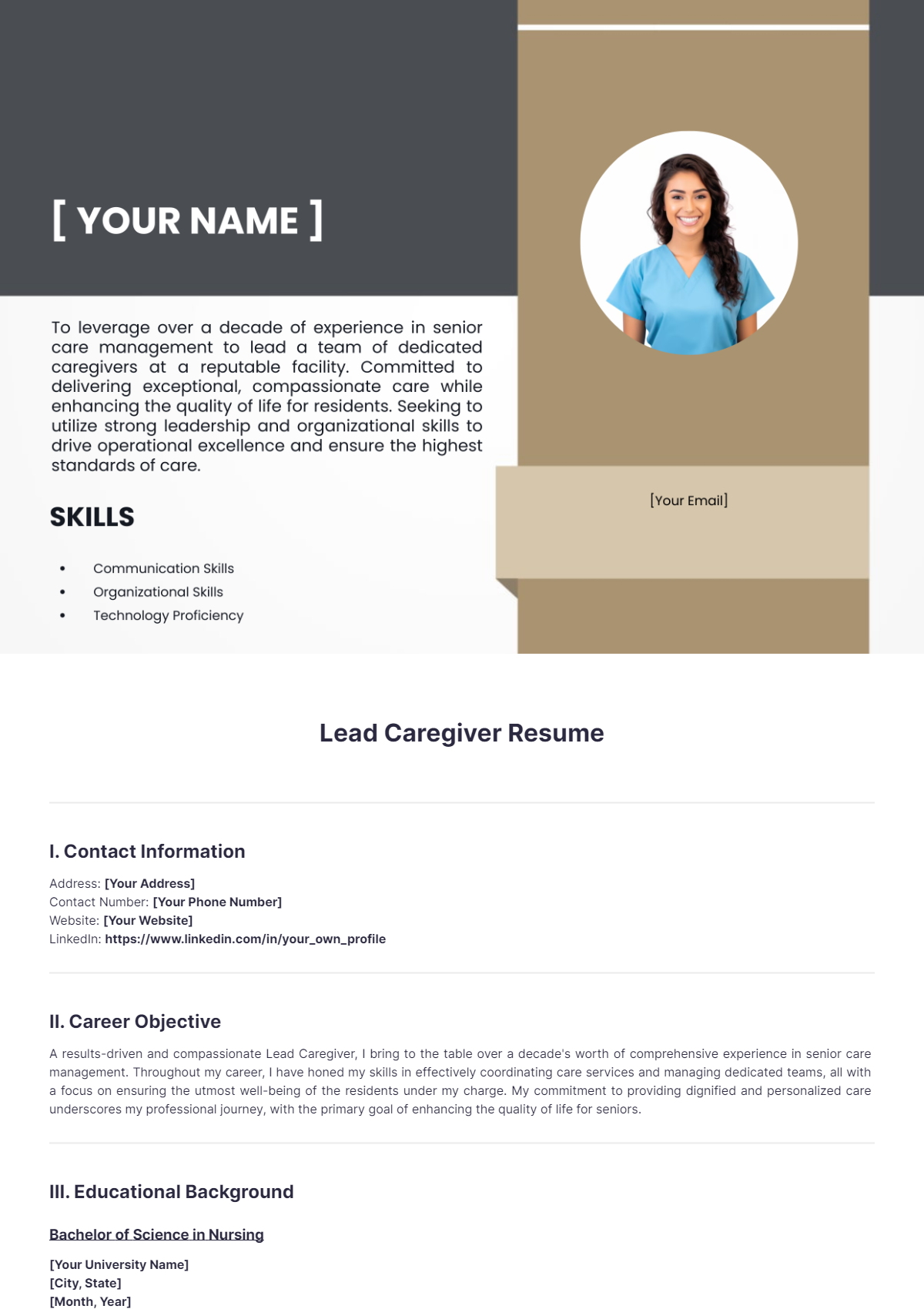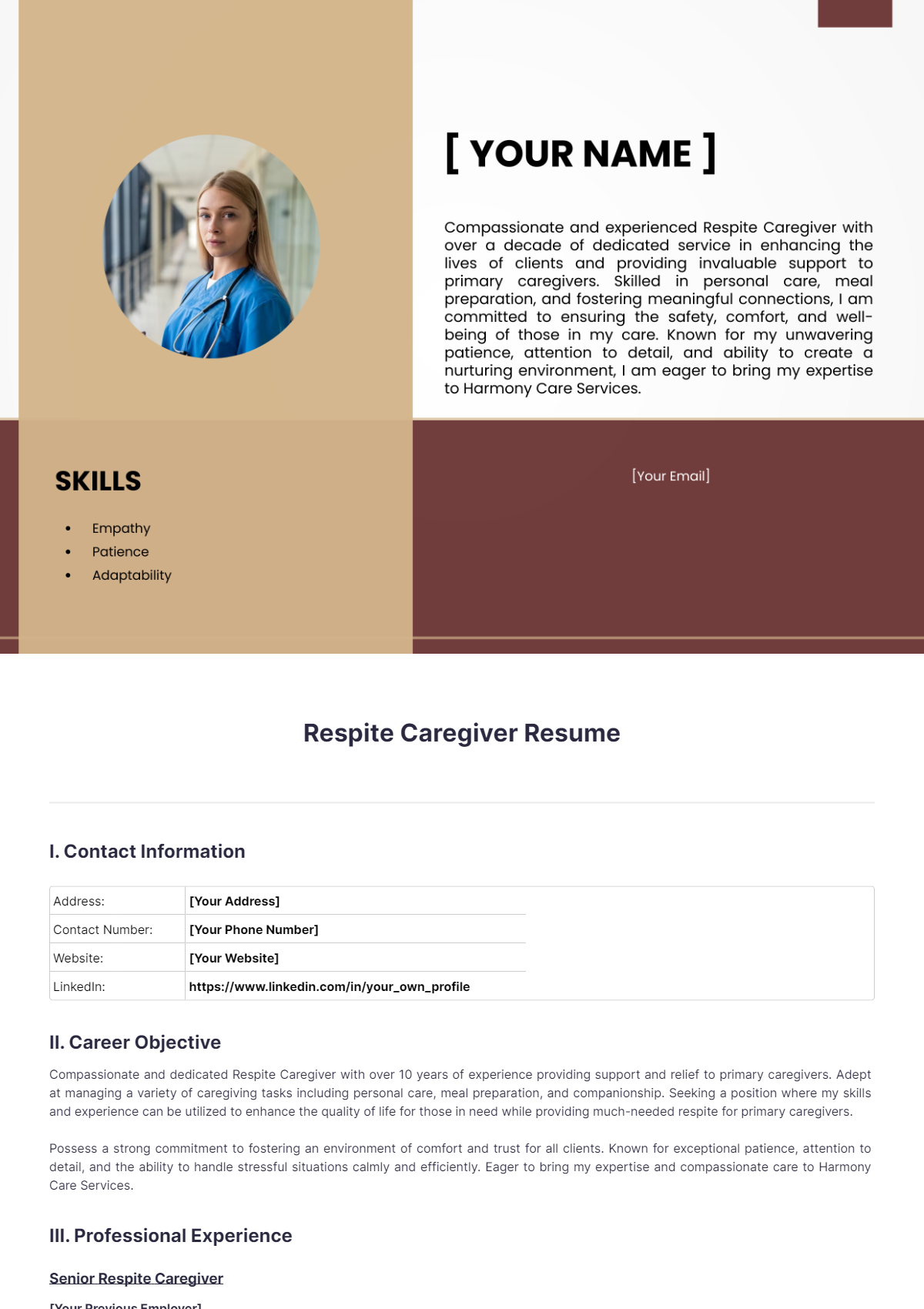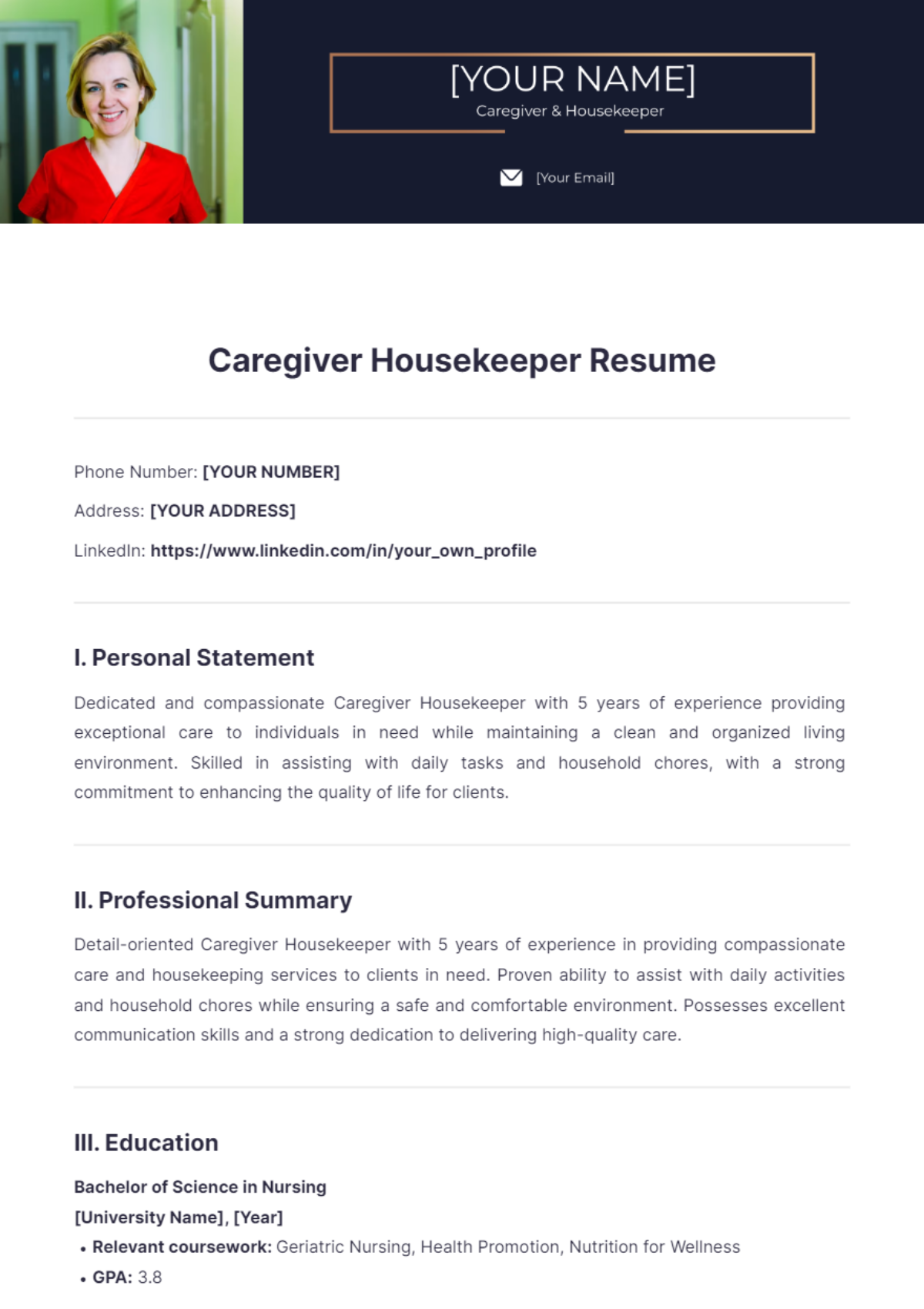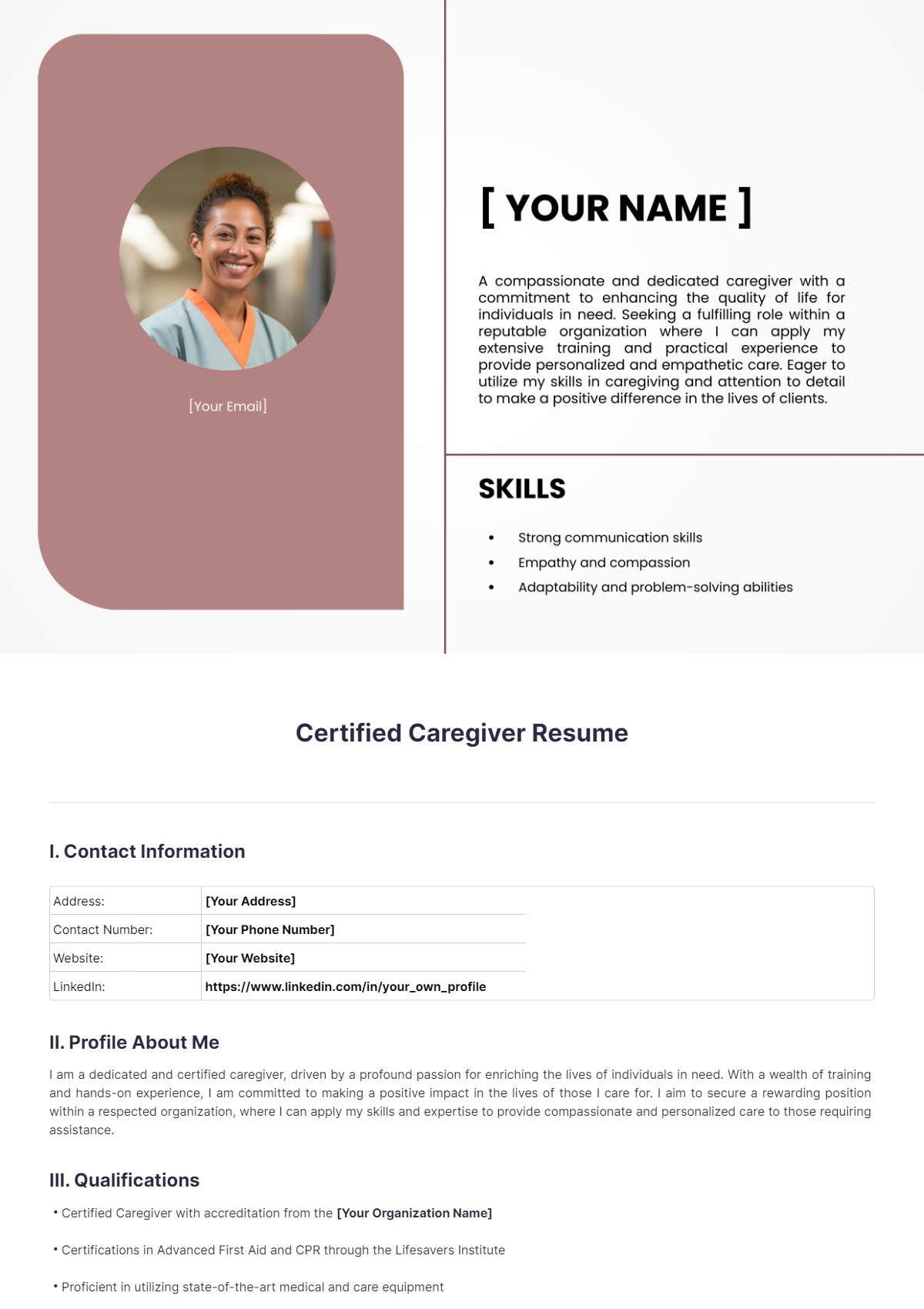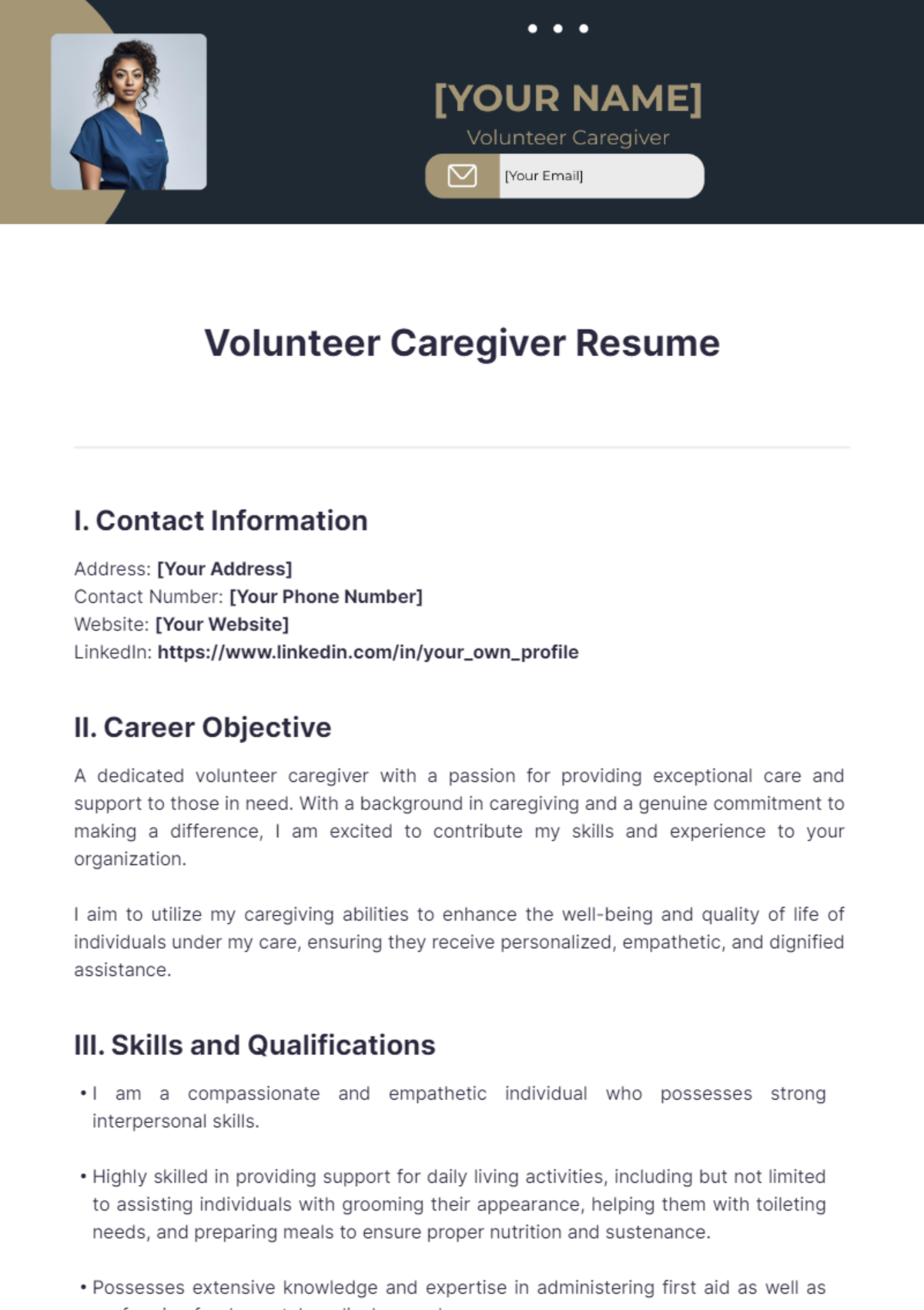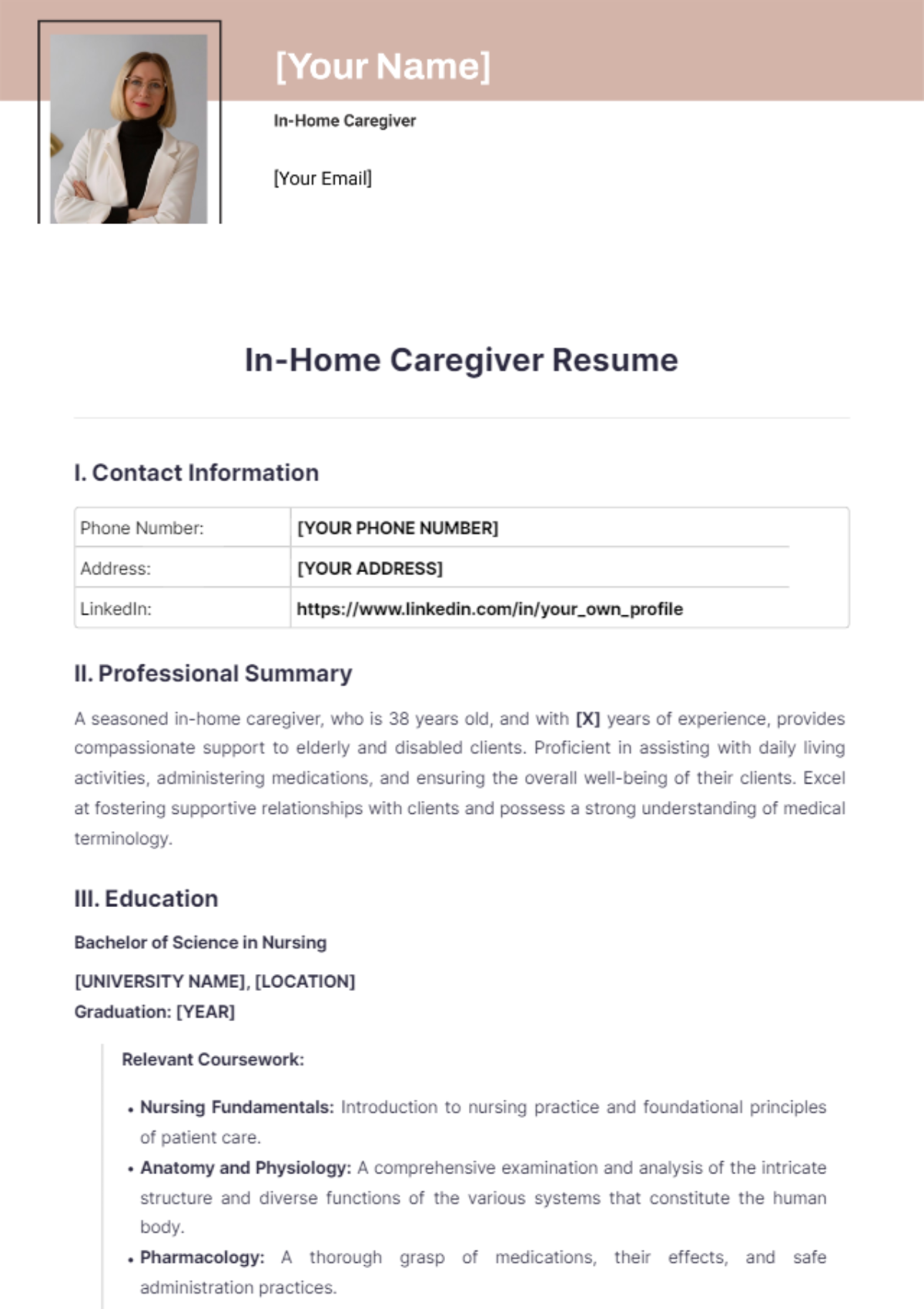Make your Job Application Stand Out with Caregiver Resume Templates from Template.net
Keep your caregiving career aspirations on track, capture recruiters' attention, and showcase your skills with our Caregiver Resume Templates from Template.net. Perfect for caregivers looking to leave a lasting impression on potential employers, our templates help you highlight your experience and skill set effortlessly. Whether you're applying for a position at a local care facility or looking to make the leap to a more senior role, our templates are designed to maximize your chances of success. Each template includes critical sections such as experience, education, and certifications, along with contact information to ensure you provide a comprehensive overview of your qualifications. Best of all, no design expertise is required, thanks to our professional-grade, customizable layouts available for print or digital distribution.
Discover the many Caregiver Resume Templates we have on hand to suit any job application. Simply select a template that resonates with your style, swap in your details, and tweak colors or fonts to match your personal brand. Add advanced touches like dragging and dropping icons or graphics, inserting animated effects, and using AI-powered text tools to ensure your resume stands out. With limitless customization options and no skills barrier, creating an outstanding resume is not only easy but also fun. Our library is regularly updated with new designs, ensuring you have the latest styles at your fingertips. When you’re finished, download your masterpiece or share it effortlessly via email, export, or print—ideal for distributing across multiple channels or collaborating with others in real-time.
